As this is a curated collection of books from a personal library, please be mindful that some books may be out of print, have more current editions, or be available in digital formats. A large portion of the books presented are related to research and reference.
General Writing
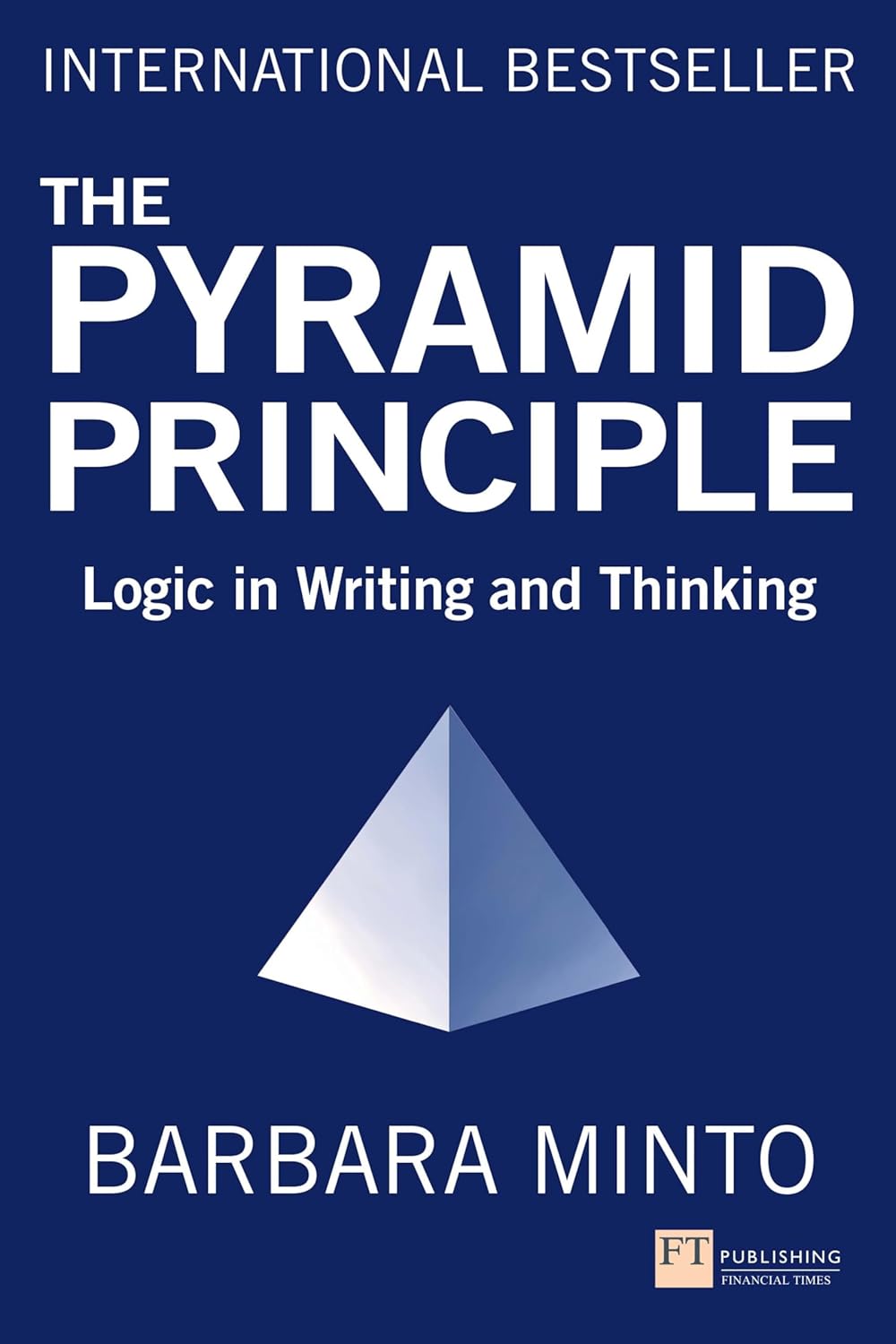
GET THE MAXIMUM IMPACT WITH THE MINIMUM EFFORT.The Pyramid Principle is the international best-seller on how to think creatively, reason lucidly and produce crisp, clear, compelling business writing.Join the tens of thousands of people worldwide who have benefited from Barbara Minto’s technique, to present your thinking so clearly that the ideas jump off the page and into the mind of the reader.Can your writing do without it?
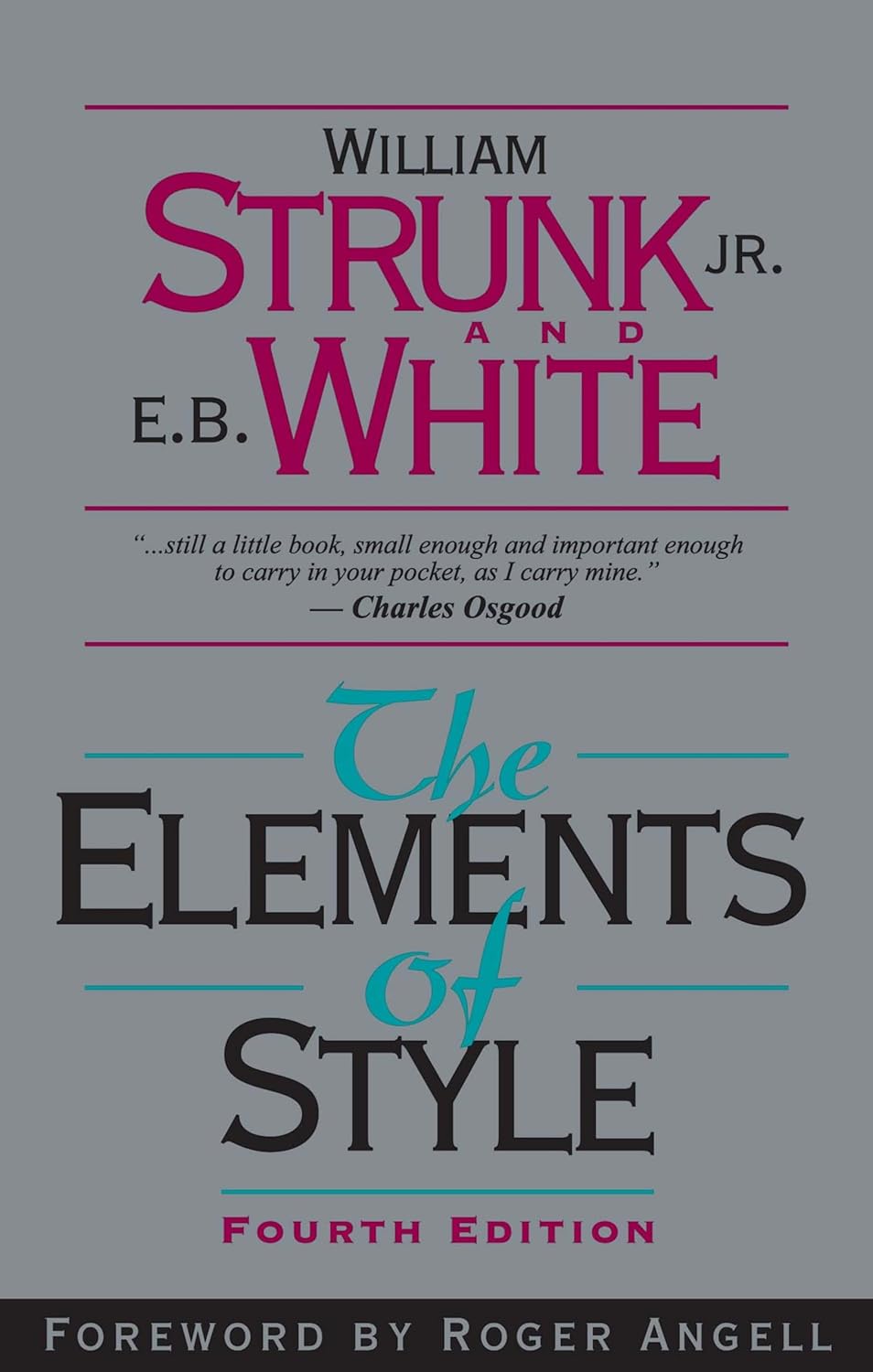
You know the authors' names. You recognize the title. You've probably used this book yourself. This is The Elements of Style, the classic style manual, now in a fourth edition. A new Foreword by Roger Angell reminds readers that the advice of Strunk & White is as valuable today as when it was first offered. This book's unique tone, wit and charm have conveyed the principles of English style to millions of readers. Use the fourth edition of "the little book" to make a big impact with writing.
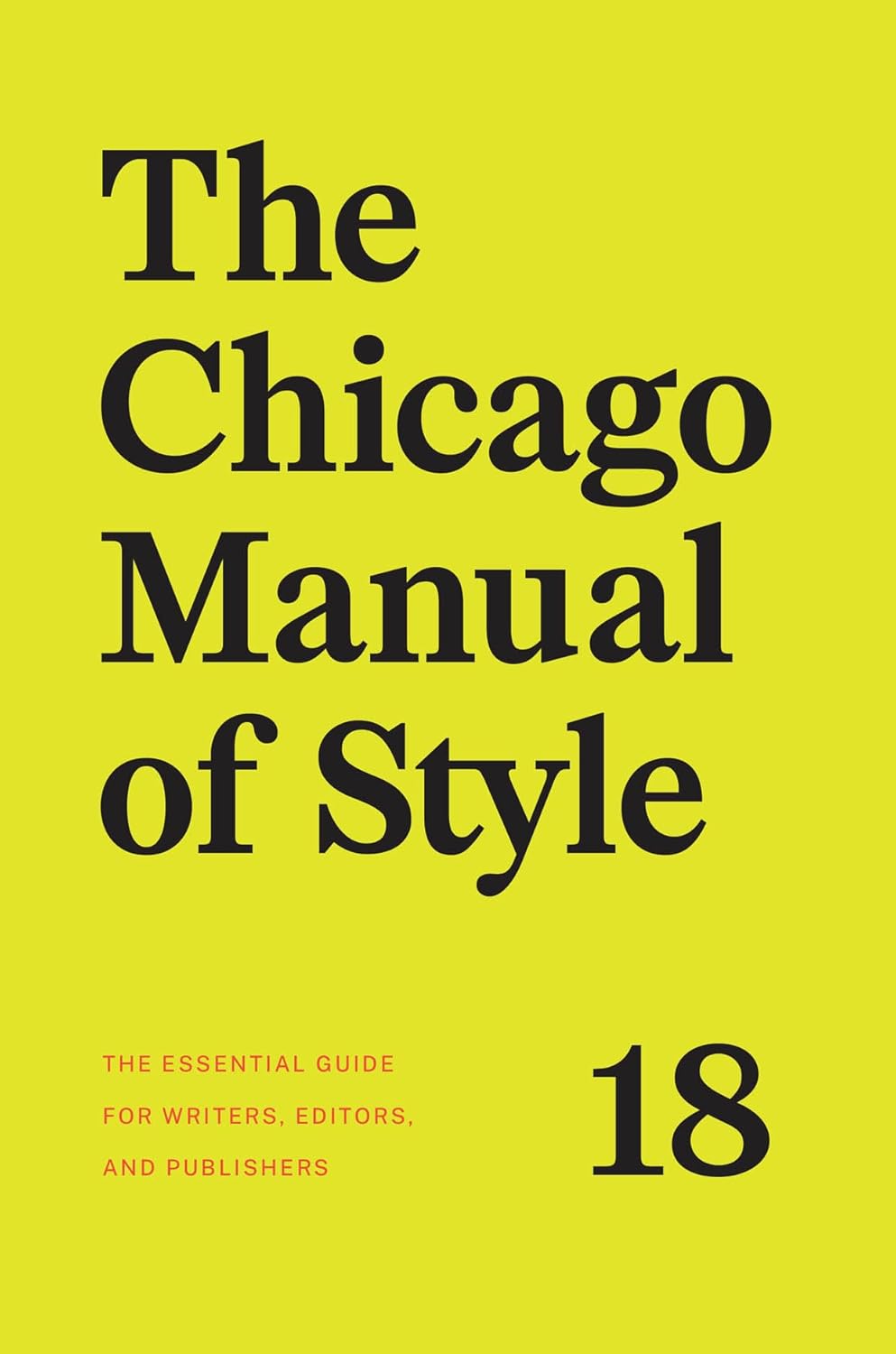
Much has happened in the years since the publication of the seventeenth edition of The Chicago Manual of Style. The world has transformed, and the Manual has risen to meet the moment. The eighteenth edition of this classic guide for writers, editors, and publishers is the most extensive revision in two decades. Every chapter has been reexamined with diversity and accessibility in mind, and major changes include updated and expanded coverage of pronoun use and inclusive language, revised guidelines on capitalization, a broader range of examples, new coverage of Indigenous languages, and expanded advice on making publications accessible to people with disabilities. The Manual’s traditional focus on nonfiction has been expanded to include fiction and other creative genres in coverage of topics such as punctuation and dialogue, and the needs of self-published authors receive wider attention.The citation chapters have been thoroughly reorganized for the benefit of new and experienced users alike, and the key concepts for editing mathematics have been integrated into the chapters where they will be most useful to generalists. Evolving technologies—from open-access publishing models to AI—are covered throughout. And naturally, there are some well-considered updates to familiar rules, including changes intended to align the Manual’s recommendations more closely with real-world usage.As with every new edition, devotees of the Manual will find much to discover and ponder.
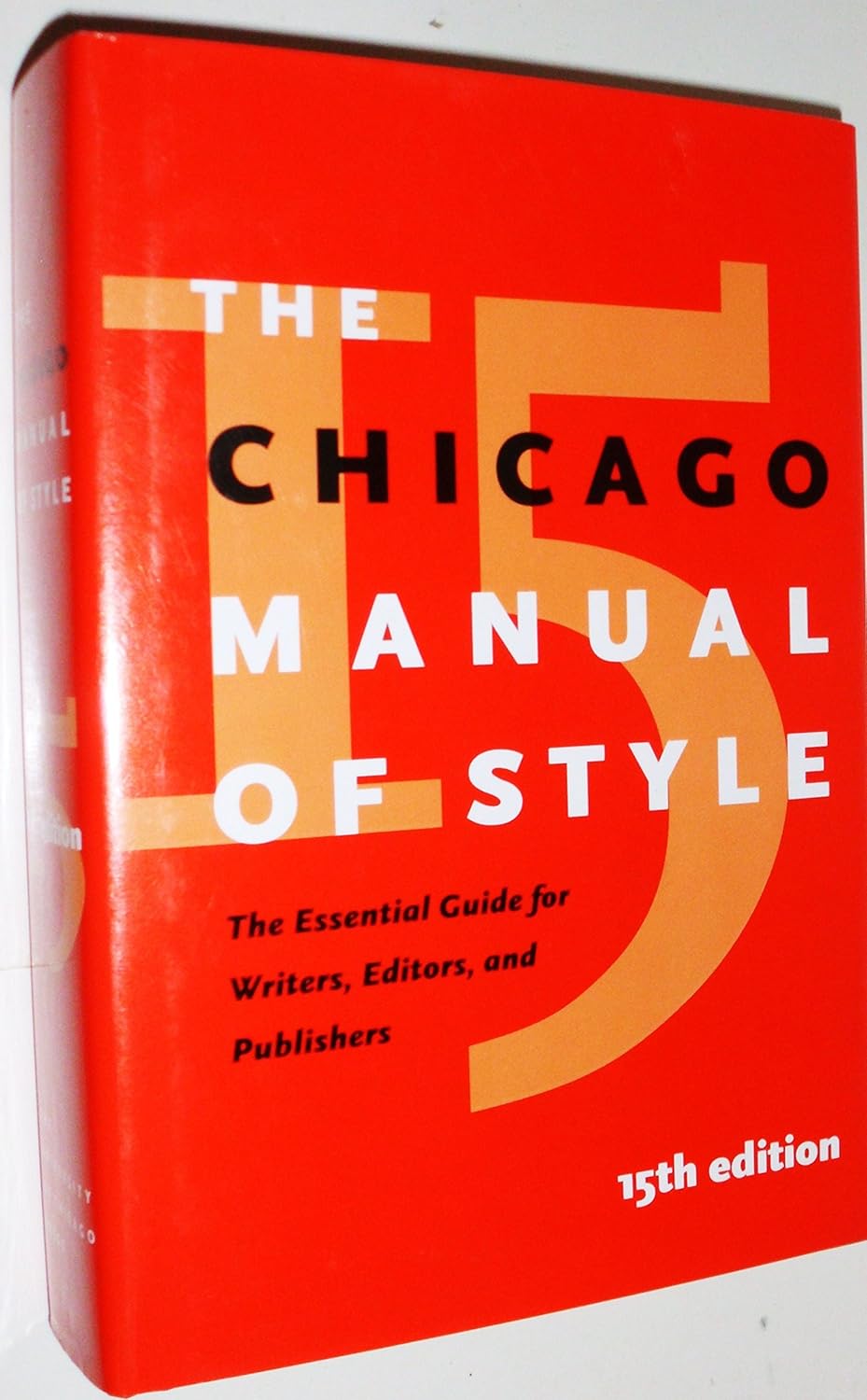
In the 1890s, a proofreader at the University of Chicago Press prepared a single sheet of typographic fundamentals intended as a guide for the University community. That sheet grew into a pamphlet, and the pamphlet grew into a book—the first edition of the Manual of Style, published in 1906. Now in its fifteenth edition, The Chicago Manual of Style—the essential reference for authors, editors, proofreaders, indexers, copywriters, designers, and publishers in any field—is more comprehensive and easier to use than ever before. Those who work with words know how dramatically publishing has changed in the past decade, with technology now informing and influencing every stage of the writing and publishing process. In creating the fifteenth edition of the Manual, Chicago's renowned editorial staff drew on direct experience of these changes, as well as on the recommendations of the Manual's first advisory board, composed of a distinguished group of scholars, authors, and professionals from a wide range of publishing and business environments.Every aspect of coverage has been examined and brought up to date—from publishing formats to editorial style and method, from documentation of electronic sources to book design and production, and everything in between. In addition to books, the Manual now also treats journals and electronic publications. All chapters are written for the electronic age, with advice on how to prepare and edit manuscripts online, handle copyright and permissions issues raised by technology, use new methods of preparing mathematical copy, and cite electronic and online sources.A new chapter covers American English grammar and usage, outlining the grammatical structure of English, showing how to put words and phrases together to achieve clarity, and identifying common errors. The two chapters on documentation have been reorganized and updated: the first now describes the two main systems preferred by Chicago, and the second discusses specific elements and subject matter, with examples of both systems. Coverage of design and manufacturing has been streamlined to reflect what writers and editors need to know about current procedures. And, to make it easier to search for information, each numbered paragraph throughout the Manual is now introduced by a descriptive heading.Clear, concise, and replete with commonsense advice, The Chicago Manual of Style, fifteenth edition, offers the wisdom of a hundred years of editorial practice while including a wealth of new topics and updated perspectives. For anyone who works with words, whether on a page or computer screen, this continues to be the one reference book you simply must have.
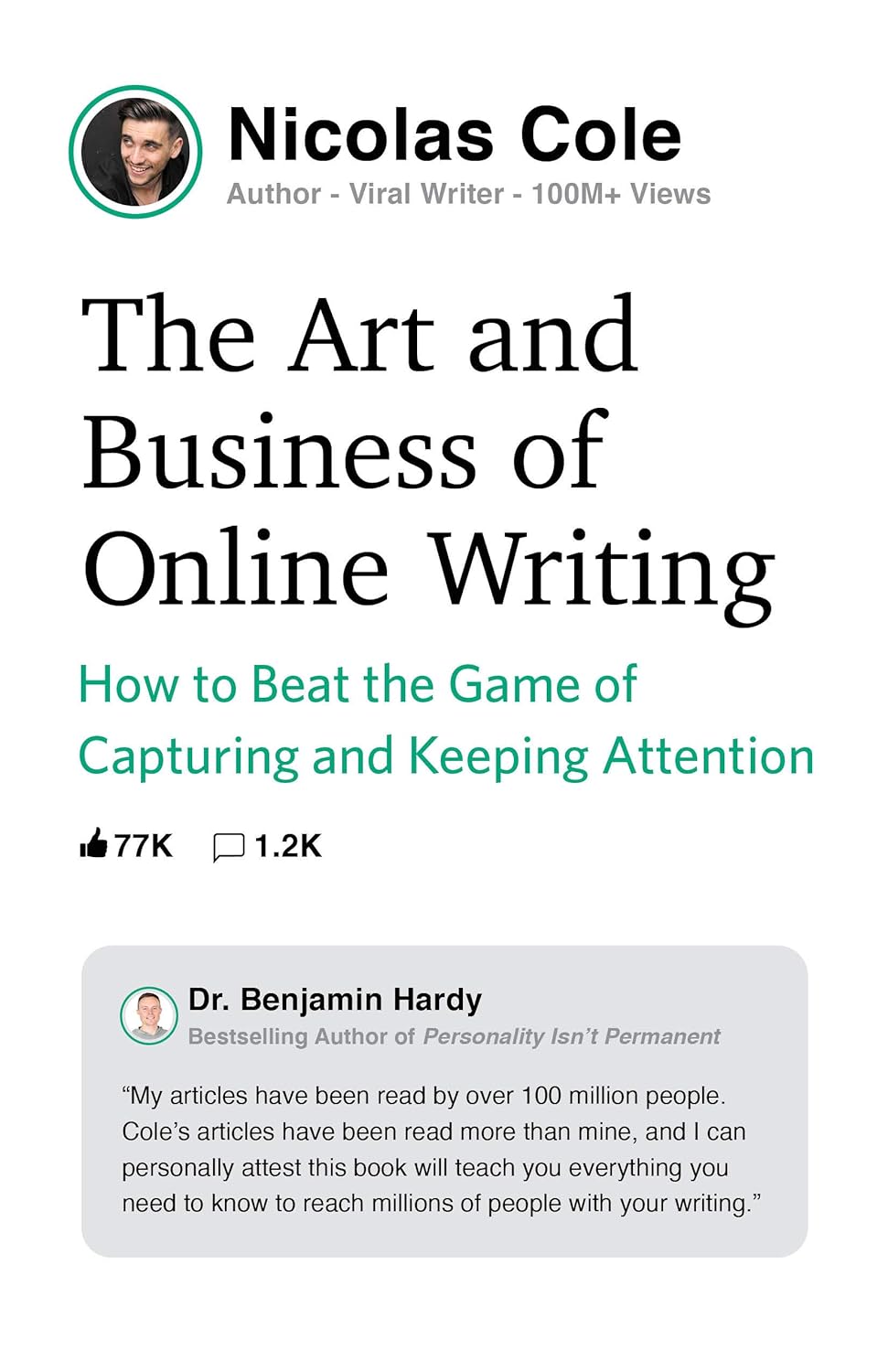
What are the secrets to writing online? Why do some writers accumulate hundreds of thousands, even millions of views on their content—and others write and write, only to go unnoticed?Nicolas Cole, one of the most viral columnists on the internet with more than 100 million views on his writing, is pulling back the curtain. After becoming the #1 most-read writer on all of Quora in 2015, a Top 10 contributing writer for Inc Magazine from 2016 to 2018, and one of the most popular writers on Medium in more than 15 different categories, Cole went on to build a multi-million-dollar ghostwriting company publishing thousands of articles on the internet for more than 300 different Silicon Valley entrepreneurs, C-level executives, New York Times best-selling authors, Olympic athletes, Grammy-winning producers, and renowned industry leaders. How?By using his own personal toolkit of writing strategies, headline structures, formats, and proven styles, all of which were mastered over a 10-year period.“This book contains everything I know about online writing,” says Cole. “From going viral, to building a massive library of content that will continue to pay you dividends well into the future.”
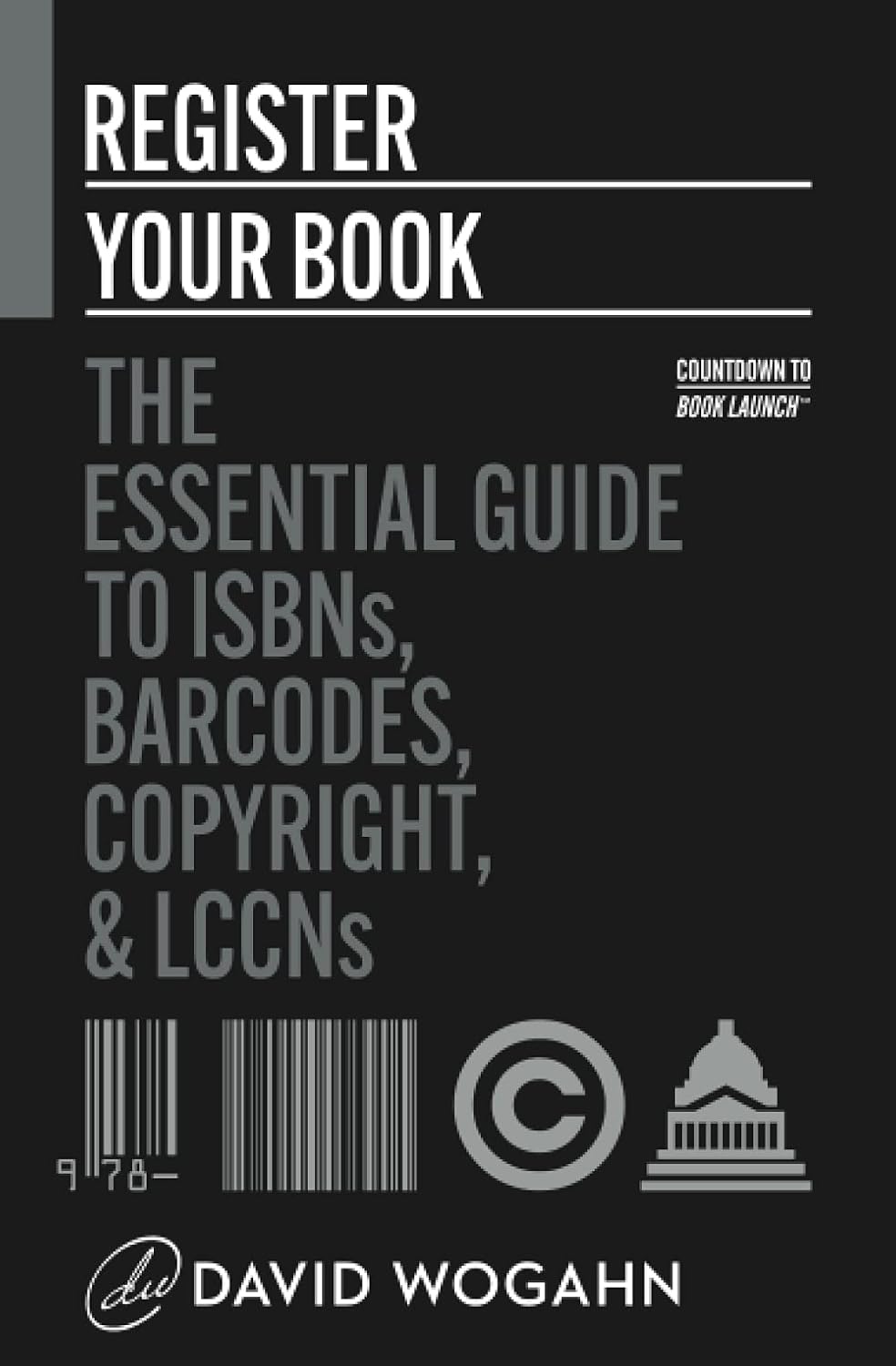
Save money, save time, protect your investment, and improve your marketing. • Reference essential metadata details for ISBNs, barcodes, LCCNs, copyright. • Avoid legal headaches, missed deadlines, and expensive fees. • Learn how to publish as a professional, not an amateur. • Protect your book’s hard-earned reader reviews. • Ensure your freedom to use any book printer. • Include your book in the directories used by major publishers. • Keep your options open to use any book distributor. • Prevent your advance reading copies from being re-sold online.Your guide to professional self-publishing.
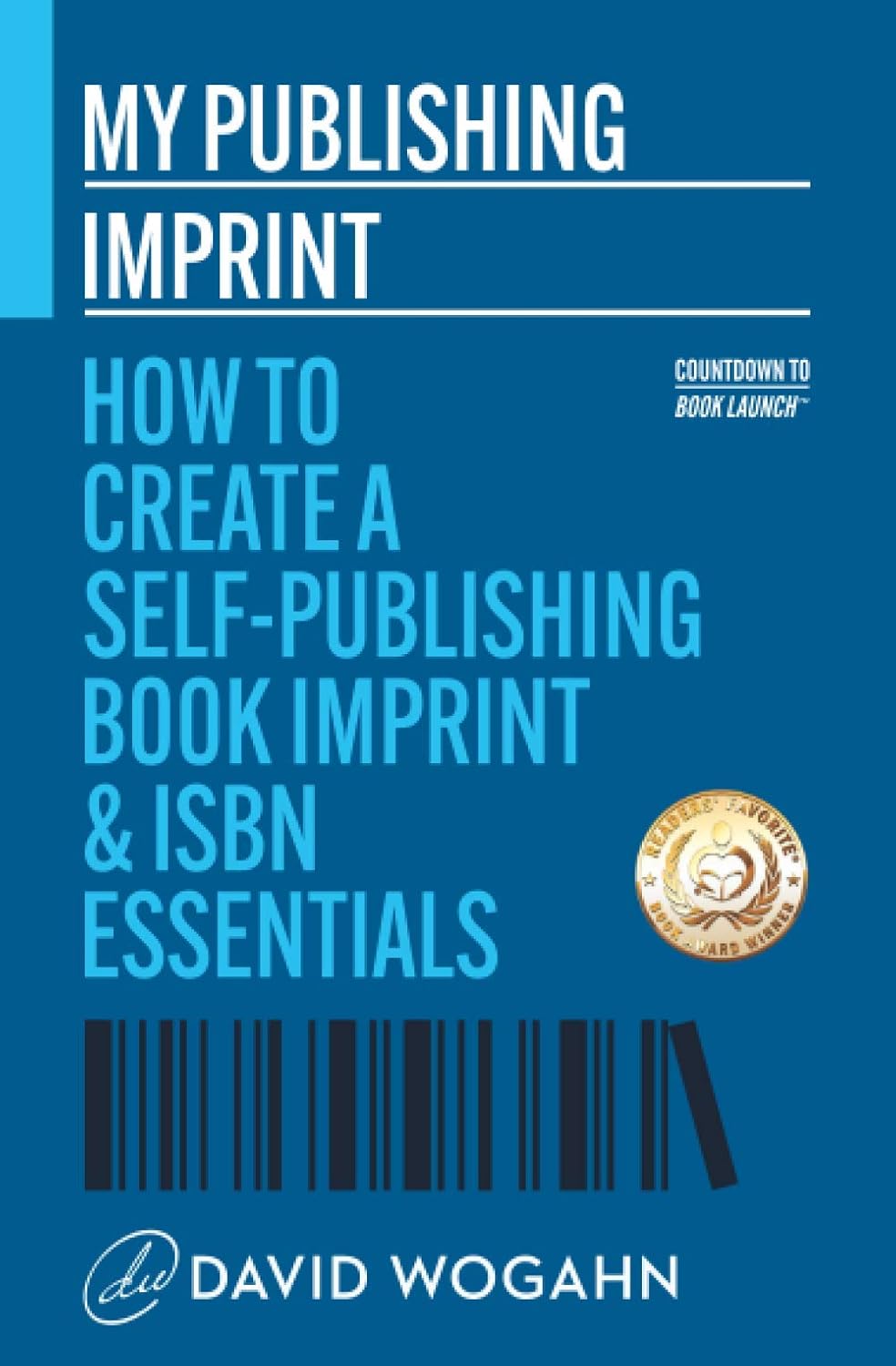
Are you planning to self-publish? Do you want to be a publisher?Don't settle for Amazon's free ISBN until you read this book.My Publishing Imprint answers these important questions: • Do you have to create a publishing imprint to publish a book? • Do you need to establish an entity or register a business name if you want to be recognized as the publisher of a book? • What are the legal and business considerations? • Where does your publishing imprint name appear in public and industry records? • How do you research names? • What do other indie publishers do? • What are the risks of using a free Amazon ISBN?My Publishing Imprint is your guide to understanding the facts, your options, and the key decisions you need to make before you publish a book. Once made, they cannot be reversed unless you republish your book.
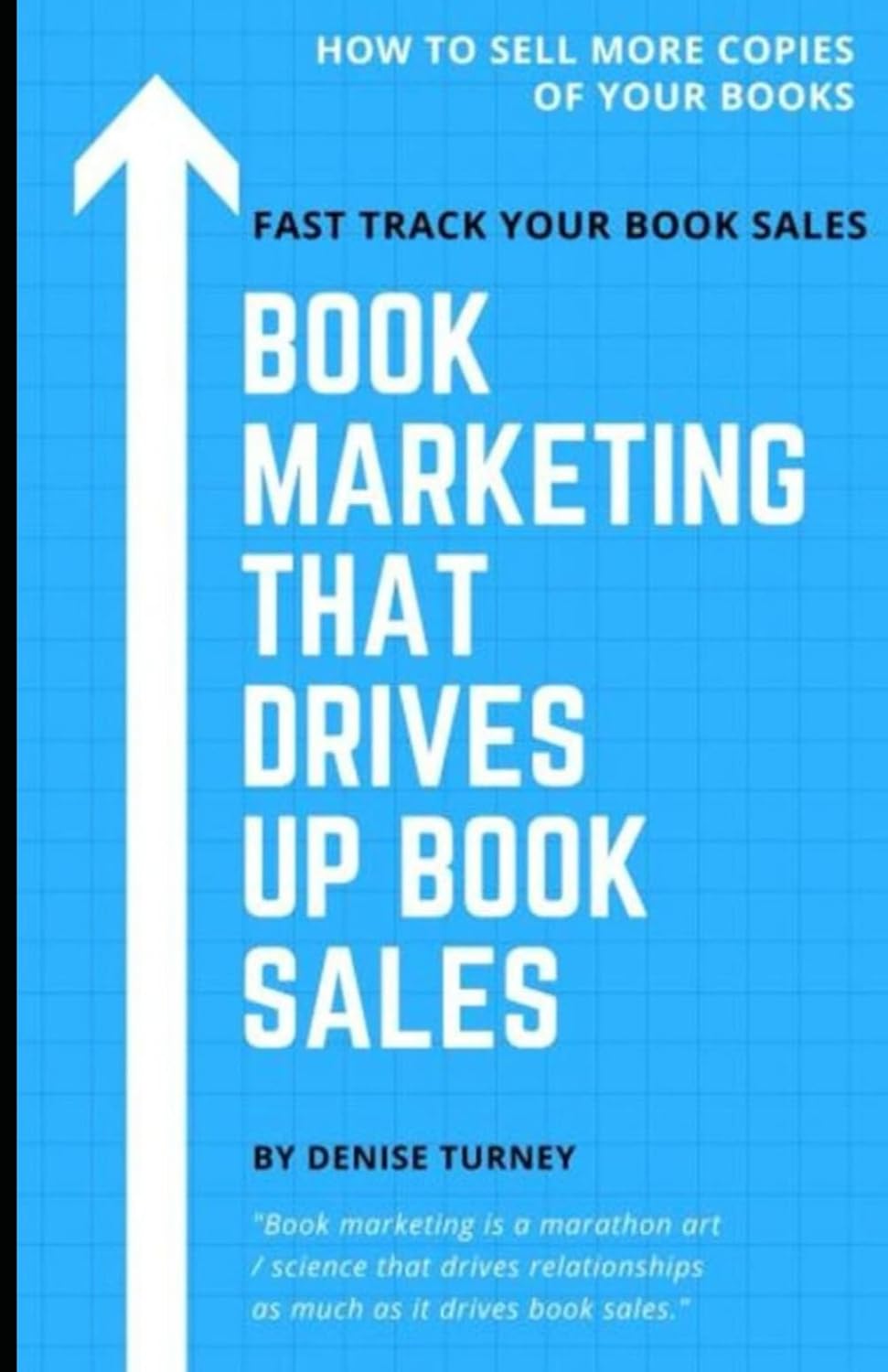
Are you tired of pouring time and money into book marketing with little to no results? Ready to unlock the secrets to selling more copies and finding the right readers? Look no further than Book Marketing That Drives Up Book Sales. With over 20 years of experience in the book-selling industry inside, this comprehensive guide offers proven strategies and resources to help you market your books effectively and save you from years of trial and error.Whether you're a self-published author, a first-time writer, or an experienced novelist or nonfiction author, this comprehensive guide offers proven techniques and resources to help you market your books more effectively. You'll find step-by-step templates, sample contact forms, and insider tips on social media marketing, book tours, signings, festivals, and much more.Inside, you’ll discover:
- How to successfully launch both novels and nonfiction books
- Effective strategies for selling more ebooks
- How to tap into offline markets and build your own distribution channels
- Ways to connect with book clubs and leverage book marketing analytics
- Techniques for selling books while working a full-time job
This book also covers under-the-radar marketing opportunities, like book exchanges, and teaches you how to create daily itineraries that optimize your marketing efforts. Whether you're looking to build your social media presence, improve your blog to attract readers, or get your books into bookstores, Book Marketing That Drives Up Book Sales gives you the tools you need to succeed.
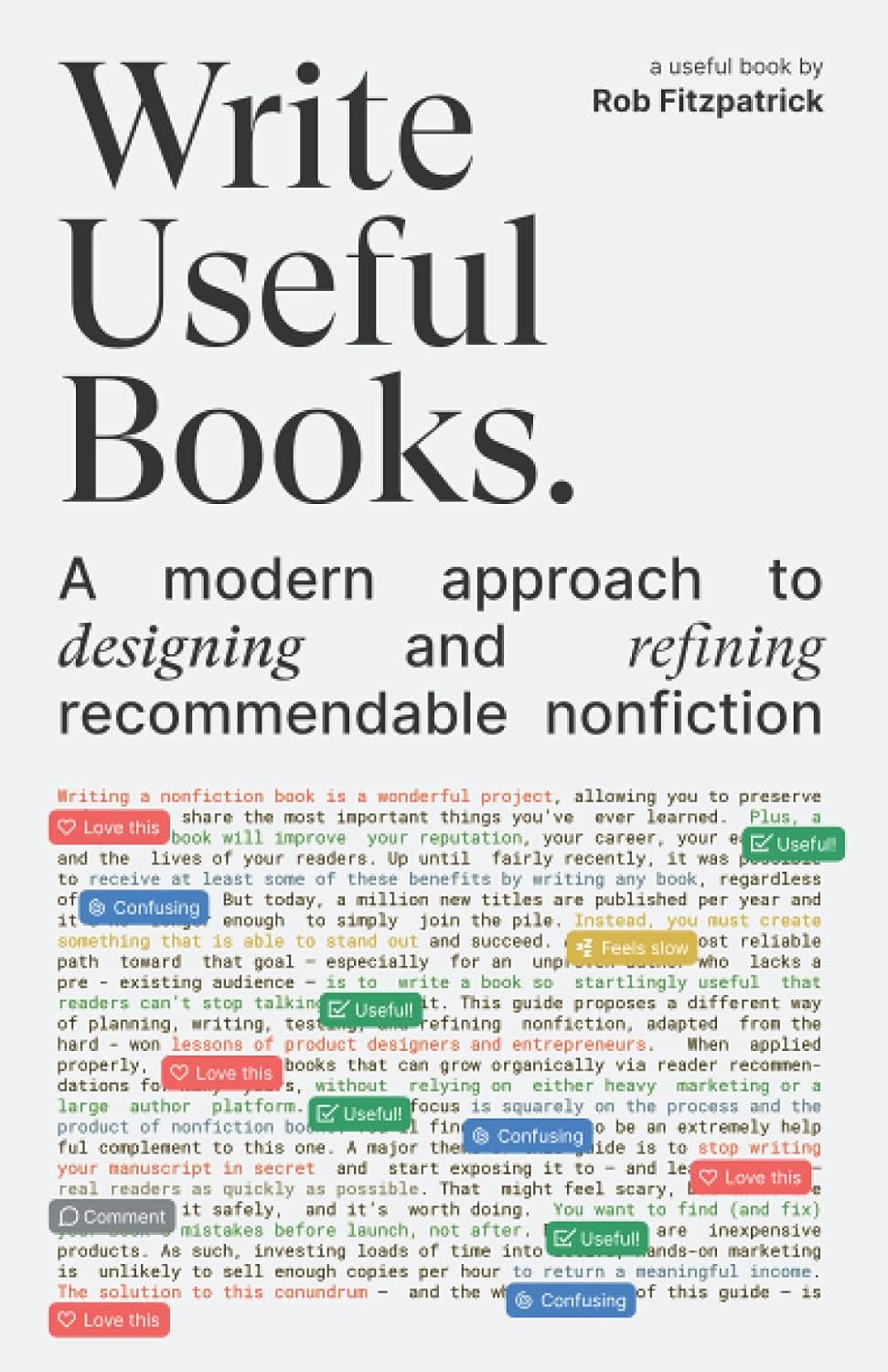
The goal of book marketing is to stop needing to do itLearn how to:
- Scope your book into the world's best solution for a certain type of reader
- Test, improve, & iterate your ToC without needing to rewrite anything
- Design a engaging reader experience that makes your book a delight to read
- Discover the hidden analytics of boredom & confusion to identify book-killing problems & make the most of beta readers
- Treat marketing as a temporary activity instead of an ongoing obligation by designing a strong recommendation loop
- Evaluate which of the four seed marketing options are best-suited for your goals, constraints, & skills
- Write a book that endures & grows for years instead of fading into swift obscurity
- Boost long-term growth by optimizing your pricing, platforms, & purchase funnel
Most books don't workWriting a nonfiction book is a wonderful project, allowing you to preserve & share the most important things you’ve ever learned. Plus, a successful book will improve your reputation, your career, your earnings, & the lives of your readers.Up until fairly recently, it was possible to receive at least some of these benefits by writing any book, regardless of its quality. But today, a million new titles are published per year and it’s no longer enough to simply join the pile. Instead, you must create something that is able to stand out & succeed. And the most reliable path toward that goal — especially for an unproven author who lacks a pre-existing audience — is to write a book so startlingly useful that readers can’t stop talking about it.This guide proposes a different way of planning, writing, & refining nonfiction, drawn from the hard-won lessons of product designers & entrepreneurs. Applied properly, it leads to books that can grow organically via reader recommendations for many years, without relying on either heavy marketing or a large author platform.The preconceptions about "writing a book" are so deeply entrenched that most authors don't even ask themselves whether a better way exists. Which is crazy, because the normal approach doesn't work! For example:
- The average NYT nonfiction bestseller loses 95% of its peak sales within a year
- 70% of traditionally published titles fail to pay out a single dollar in royalties
- Vanishingly few nonfiction books sell even 500 copies
These are not good results, but it doesn’t have to be this way.By following a more modern approach, my first two books (2013 & 2019) now do more than $150k/year in royalties (and growing). You can do it too. It's not easy, but it is reliable & repeatable. And in the normally hit-driven, feast-or-famine world of writing, there's something to be said for reliability.What this book is not:This isn't a get-rich-quick scheme. If you want to write a mediocre book the easy way, then you probably want to look elsewhere. But if you want to write a successful book the right way, then this guide will help.This isn't about prose or creativity. I'm assuming that you know how to write a coherent sentence and are able to do the work. Instead, this guide is about understanding how to design, test, and refine nonfiction that succeeds as a long-lasting, high-impact, and recommendable product.This isn't a self-publishing guide. The approach in this book applies equally well to both self-published & traditionally published authors. I won’t walk you through every tool & technicality of formatting, printing, and shipping a book. Those tasks are fiddly & tedious, but they're also low-risk and easy to research online. Instead, our focus is on creating the most useful, and most recommendable book possible.
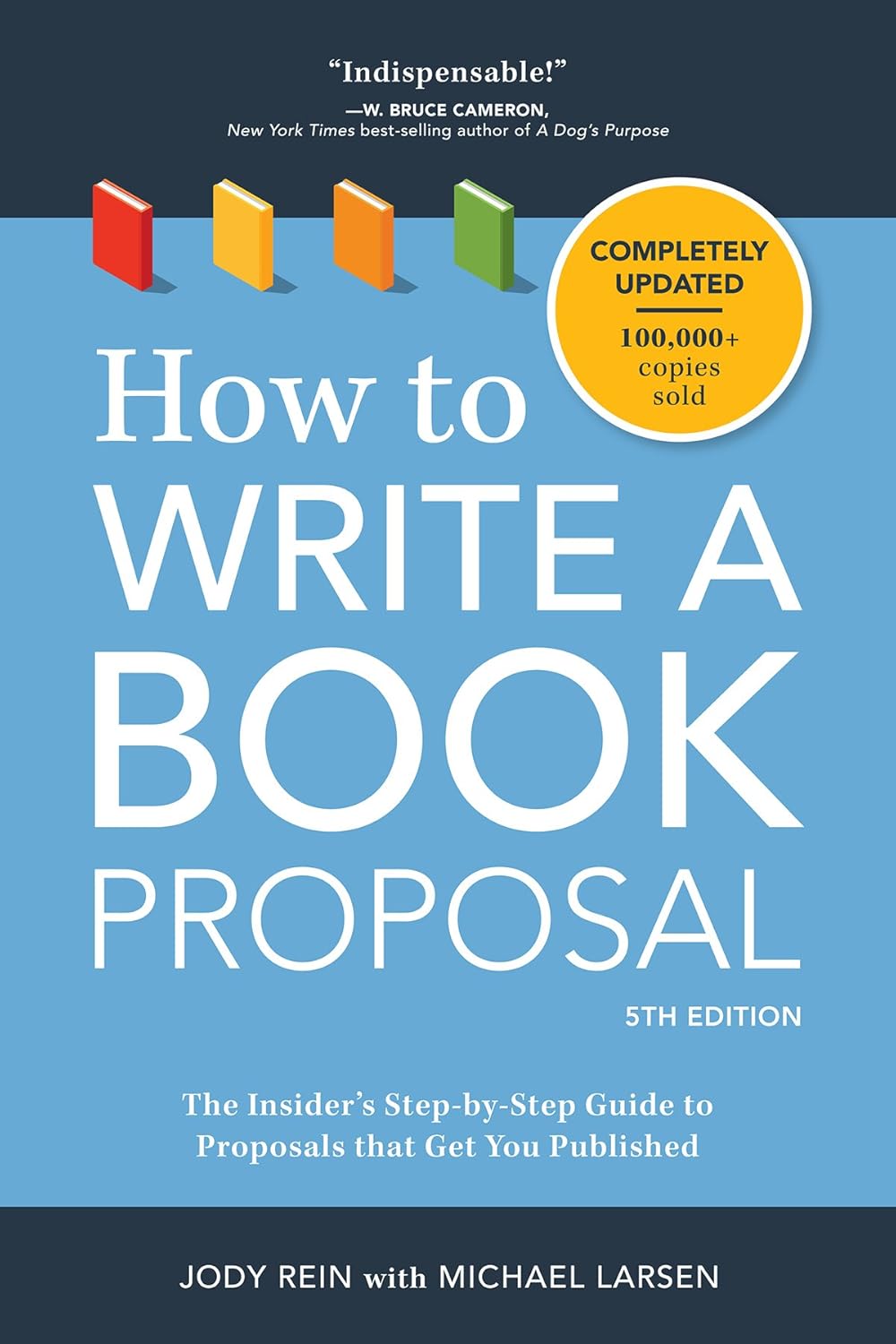
THE ESSENTIAL RESOURCE FOR SELLING YOUR BOOK If you want to publish a book, you must present it to agents and publishers with a knock-your-socks-off proposal. Whether you're seeking a traditional press to publish your self-published book or trying to win over an agent for your graphic novel, memoir, or nonfiction title, you need an irresistible proposal. The better your proposal, the better the editor, publisher, and deal you will get.Nailing your proposal requires an understanding of how publishers work and how to brand yourself, build a platform, and structure your book. You'll learn it all in this breezy top-to-bottom revision of the classic 100,000-copy best-seller. Inside How to Write a Book Proposal 5th Edition, you will find:
• Examples of successful proposals that earned six-figure deals
• Guidance from agents, publishers, and writers
• Ways to customize your proposal
• Strategies for proposals in the Digital Age
• Effective structures for narrative writers
• A list of the "Top Ten Proposal Killers"
This sassy, thorough guide from industry professionals Jody Rein and Michael Larsen will become your go-to for advice about publishing.
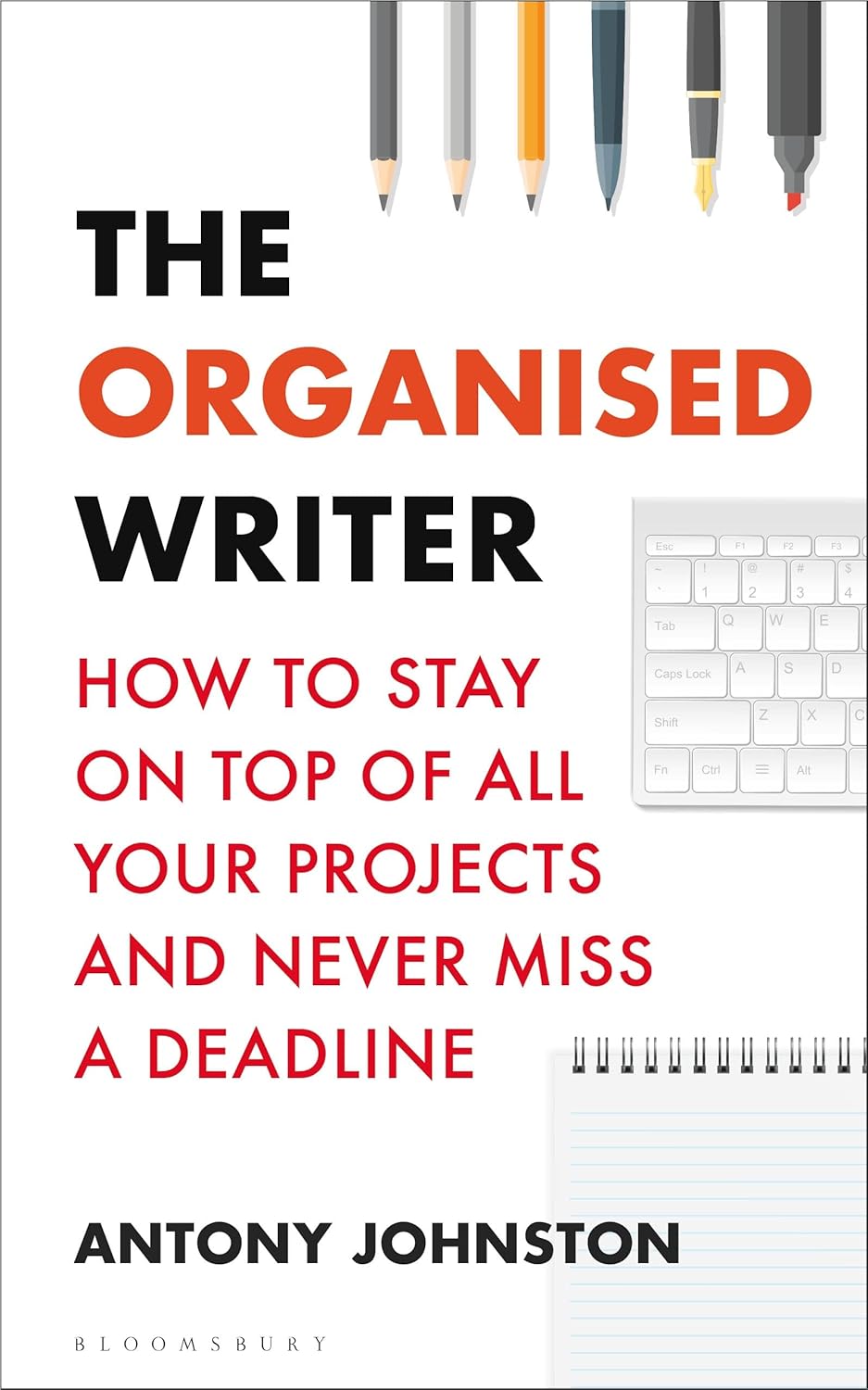
The Organized Writer is a practical, no-nonsense system that allows you to write without worrying about administration, business affairs, or scheduling. This straight-talking guide will help you become more productive, cope with multiple projects, and make time within your life to write - while also dealing with non-writing tasks more efficiently. It includes advice on how to:
· Manage your schedule · Prioritise your writing time · Take notes effectively · Work with a 'clean mind' · Get more written every day · Deal effectively with non-writing tasks · Set up a foolproof filing system · Organise your working spaceRead the book, then spend a weekend setting-up the system described, and you'll make the time back with interest. You'll get more written every day and complete more of your other tasks without being overwhelmed by all the things you have to do, forgot to do, or don't want to do.
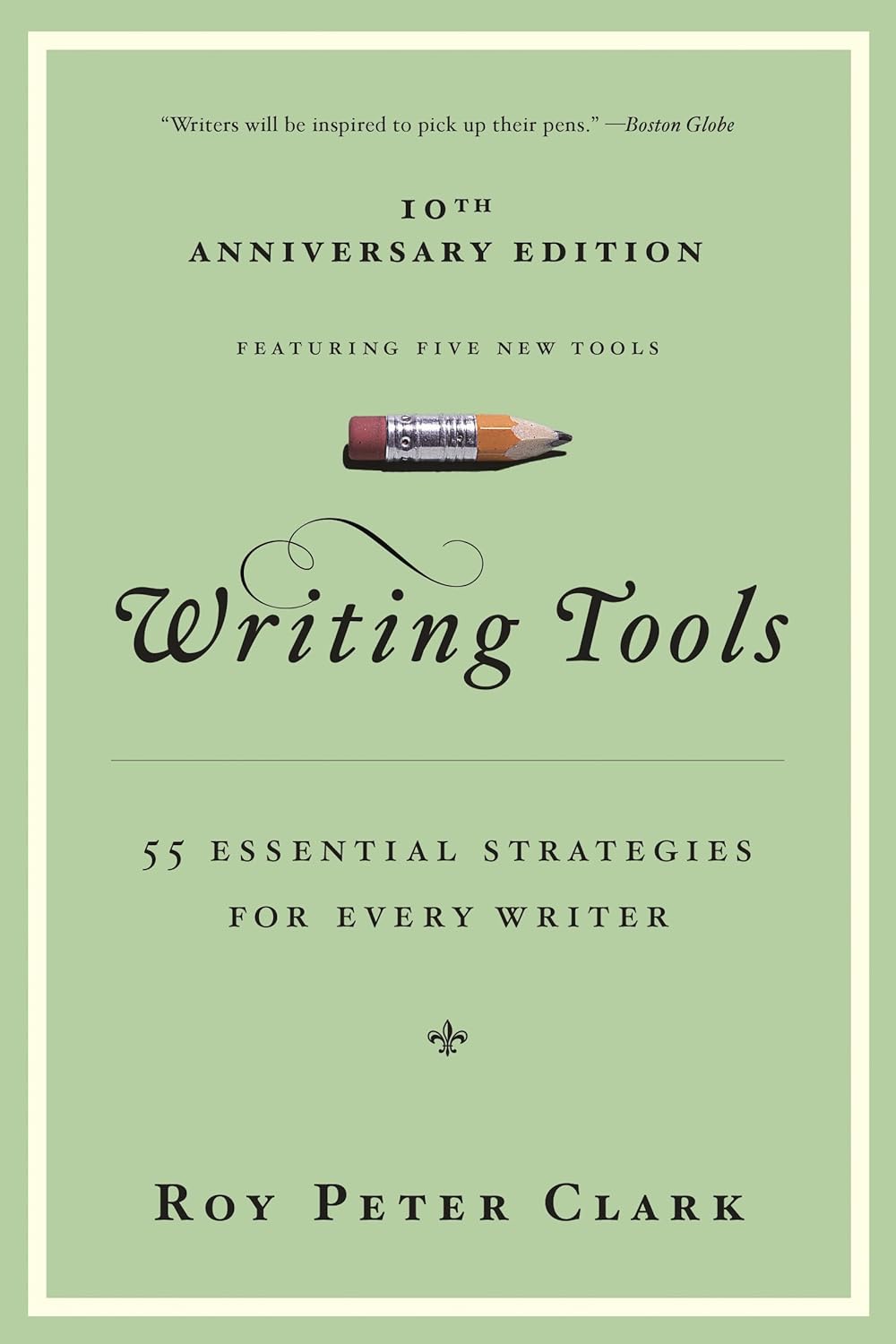
Ten years ago, Roy Peter Clark, America's most influential writing teacher, whittled down almost thirty years of experience in journalism, writing, and teaching into a series of fifty short essays on different aspects of writing. In the past decade, Writing Tools has become a classic guidebook for novices and experts alike and remains one of the best loved books on writing available. Organized into four sections, "Nuts and Bolts," "Special Effects," "Blueprints for Stories," and "Useful Habits," Writing Tools is infused with more than 200 examples from journalism and literature. This new edition includes five brand new, never-before-shared tools. Accessible, entertaining, inspiring, and above all, useful for every type of writer, from high school student to novelist, Writing Tools is essential reading.
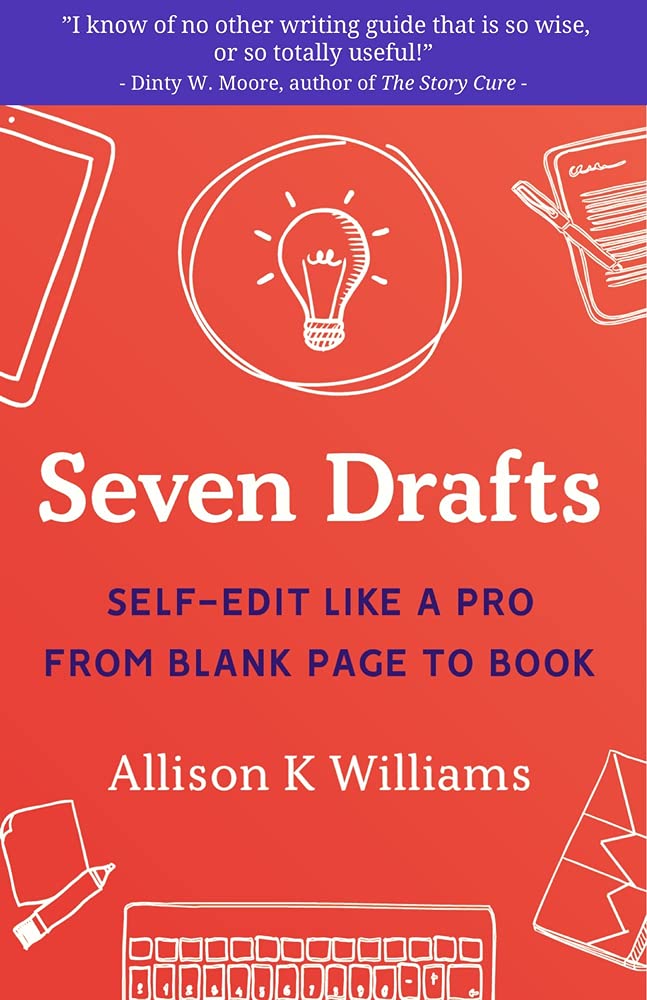
Winner, 2021 Foreword INDIES award“Brilliant, time-tested and clear” advice that will help writers at all stages, in all genres, write their very best book—and then make it better. As a freelance editor for more than a decade, Williams has shepherded books from rough draft to polished manuscripts bought by Big Five houses, university and literary presses, and for independent publishers. Now, she distills everything she’s learned from editing hundreds of drafts, coaching writers past creative blocks, and navigating authors through querying and publication, into this useful guide for every step from idea to book.Seven Drafts: Self-Edit Like a Pro from Blank Page to Book divides writing and revision into distinct stages, with a new focus in each draft. Williams’ frank, funny voice encourages writers to tackle even big editing tasks with a sense of humor and a feeling that someone who understands is on their side.With plenty of fresh examples, insider wisdom, and snappy footnotes, Seven Drafts teaches story, character, elements of writing craft and structure, how to seek and use feedback, and the publication process.
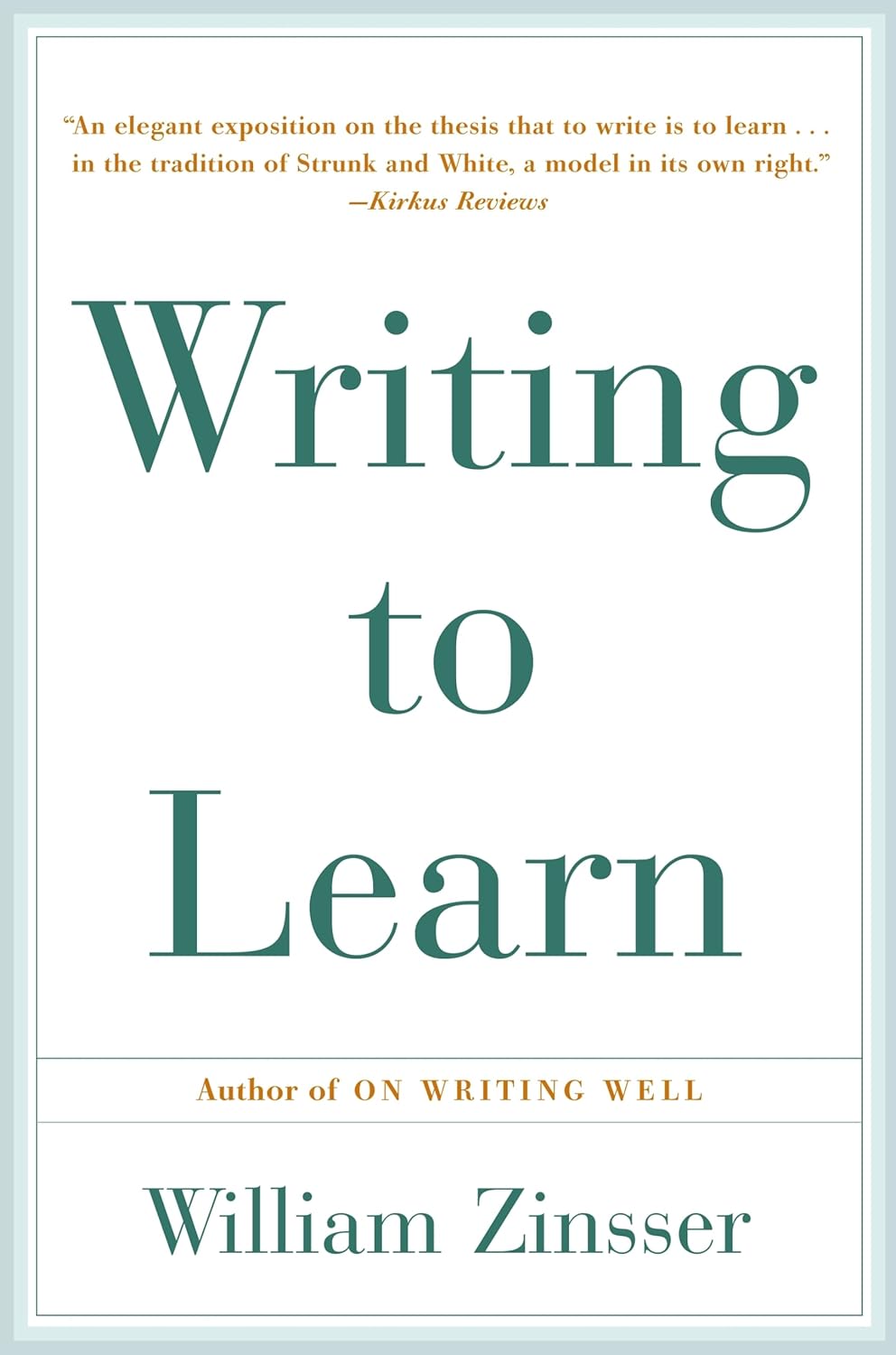
Writing to Learn is a book on how to write clearly about any subject—from mathematics, physics, and chemistry to art and music—and how to use writing as a means of learning. it is an engaging personal journey, written with warmth and humor, as Zinser takes the reader into many surprising corners of knowledge and demonstrates that every field has an accessible literature.
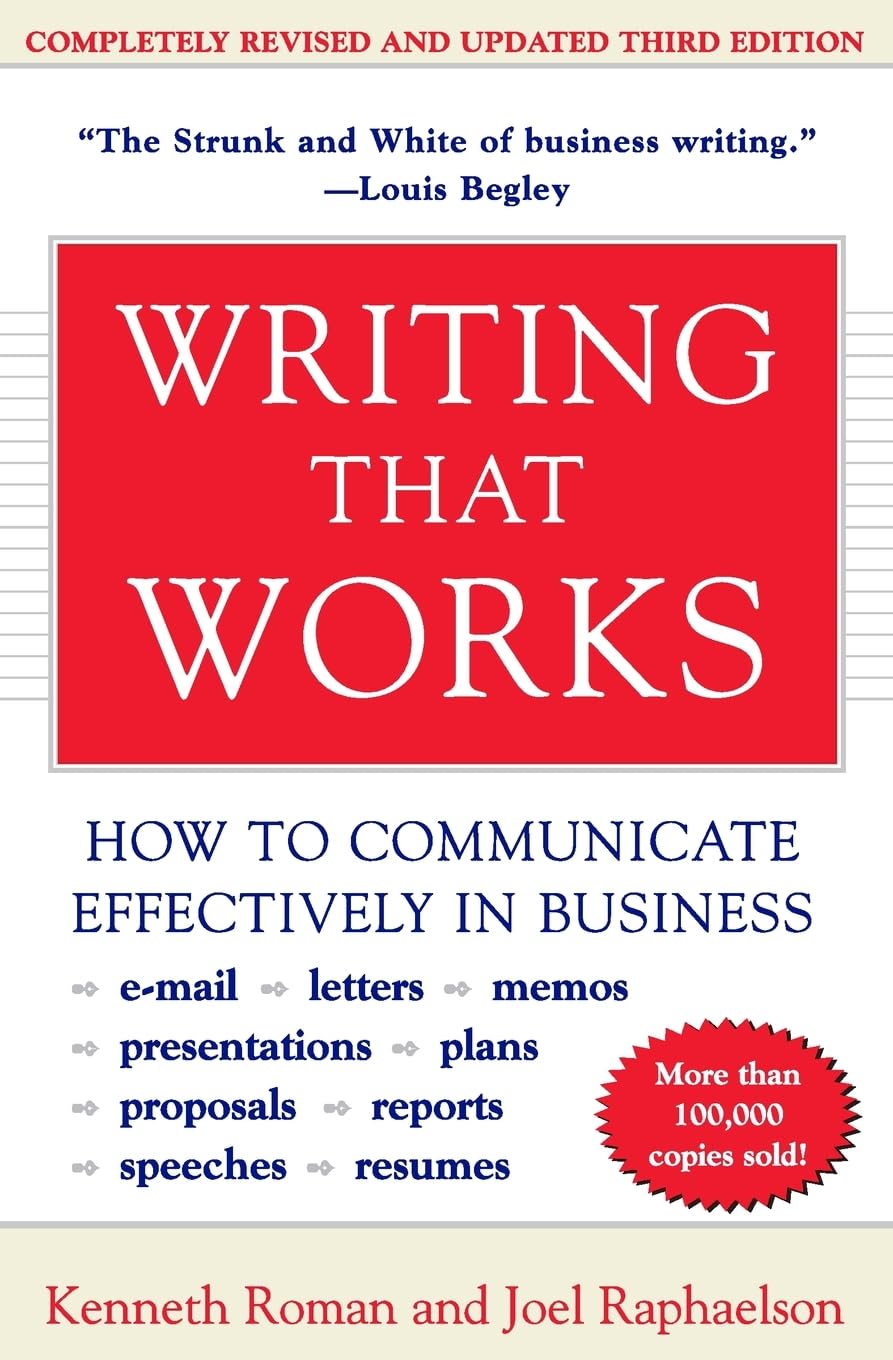
The classic guide that helps you communicate your thoughts clearly, concisely, and effectively. Essential for every professional, from entry level to the executive suite, Writing that Works includes advice on all aspects of written communication—including business memos, letters, reports, speeches and resumes, and e-mail—and offers insights into political correctness and tips for using non-biased language that won’t compromise your message.Concise and easy-to-use, Writing that Works features an accessible, at-a-glance style, full of bulleted "tips" and specific examples of good vs. bad writing.With dozens of samples and useful tips for composition, Writing That Works will show you how to improve anything you write:
- E-mails, memos and letters that get read—and get action
- Proposals, recommendations, and presentations that sell ideas
- Plans and reports that get things done
- Fund-raising and sales letters that produce results
- Resumes and letters that lead to interviews
- Speeches that make a point
And much more.
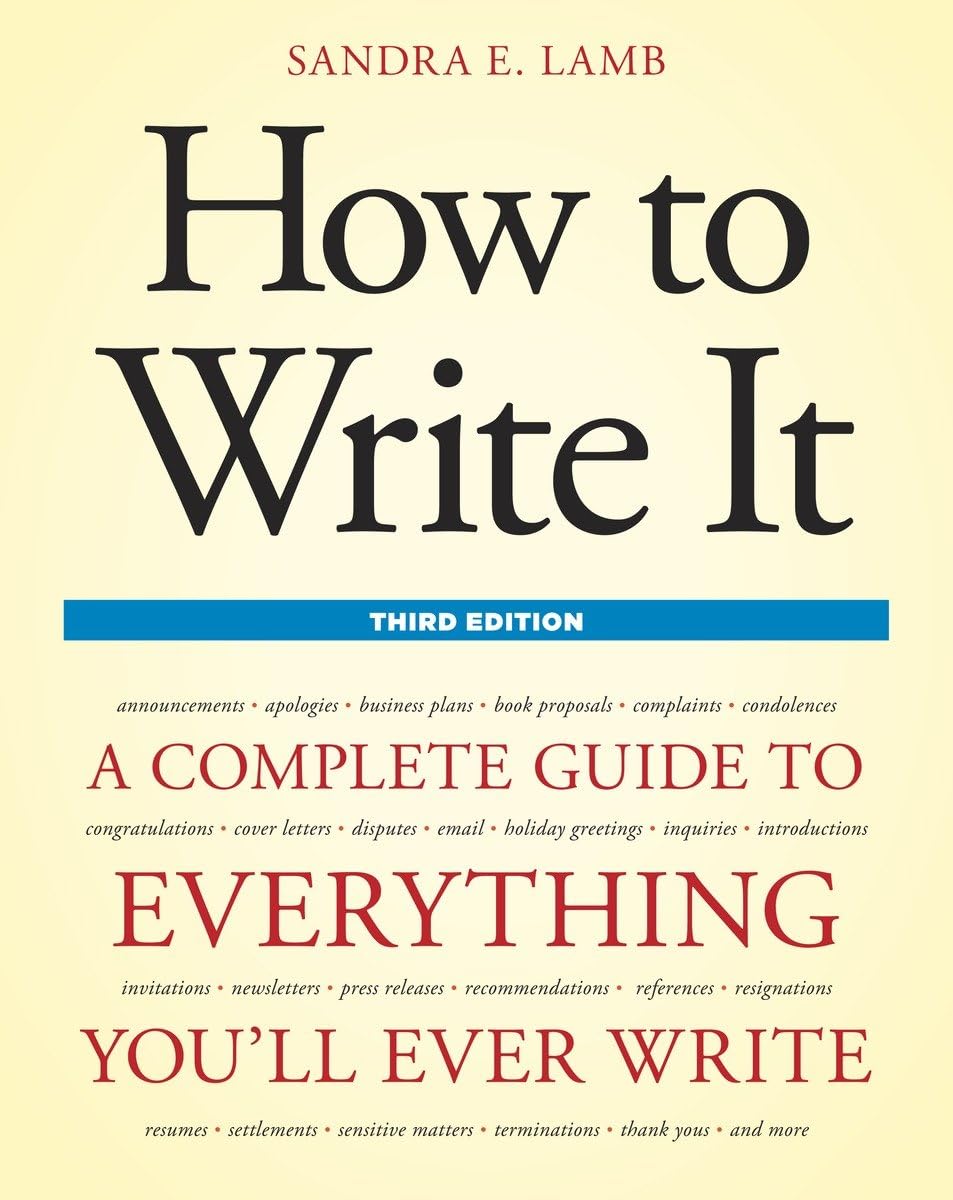
Write personal and professional communications with clarity, confidence, and style.How to Write It is the essential resource for eloquent personal and professional self-expression. Award-winning journalist Sandra E. Lamb transforms even reluctant scribblers into articulate wordsmiths by providing compelling examples of nearly every type and form of written communication. Completely updated and expanded, the new third edition offers hundreds of handy word, phrase, and sentence lists, precisely crafted sample paragraphs, and professionally designed document layouts. How to Write It is a must-own for students, teachers, authors, journalists, bloggers, managers, and anyone who doesn’t have time to wade through a massive style guide but needs a friendly desk reference.
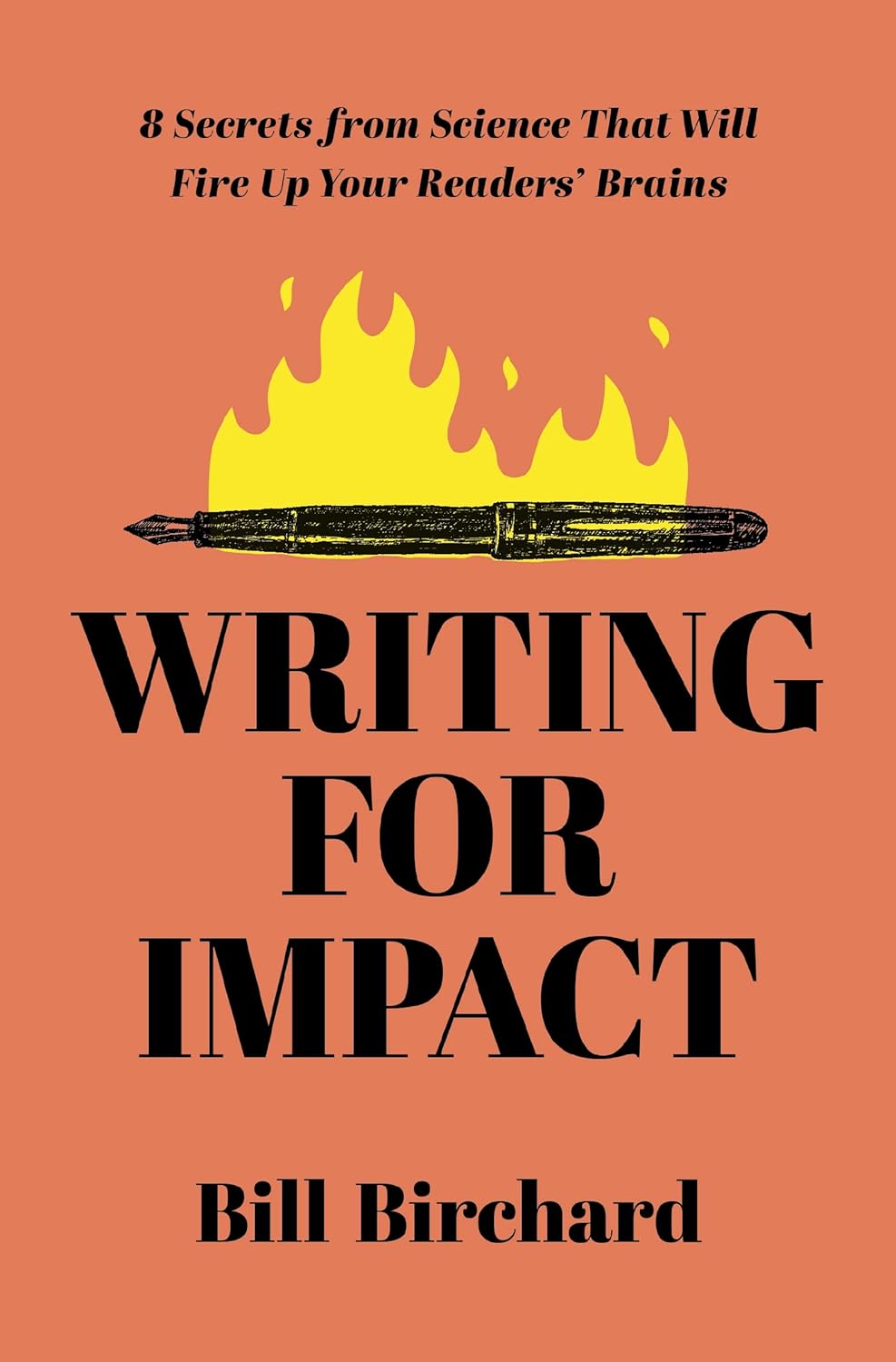
Eight science-backed strategies to make your writing irresistibly persuasive.Have you ever wondered why some words resonate deeply while others are quickly forgotten? In Writing for Impact, veteran journalist Bill Birchard unveils the secrets behind writing that captivates and influences. This essential guide harnesses the power of neuroscience and psychology to transform your written communication from mundane to mesmerizing.Drawing from cutting-edge research, Birchard reveals how the right words can stimulate the brain's reward circuits, triggering dopamine releases that keep readers engaged. With the eight essential strategies—simple, specific, surprising, stirring, seductive, smart, social, and story-driven—you'll learn to craft messages that resonate on a profound level.This book is not just about writing; it's about mastering the art of persuasion in any setting—be it business reports, academic papers, or marketing content. You'll discover how to:
- Craft compelling narratives that inspire action and evoke emotions.
- Enhance clarity and eliminate jargon to make your ideas shine.
- Build connections that transcend the page, turning readers into loyal advocates.
Packed with practical tips, engaging examples, and insightful exercises, Writing for Impact empowers you to elevate your writing and amplify your voice. Whether you're a seasoned professional or a newcomer, this book offers the tools to navigate the complexities of effective communication in today's fast-paced world.Don't just write—write with purpose. Transform your words into instruments of influence and watch as your ideas make impact!
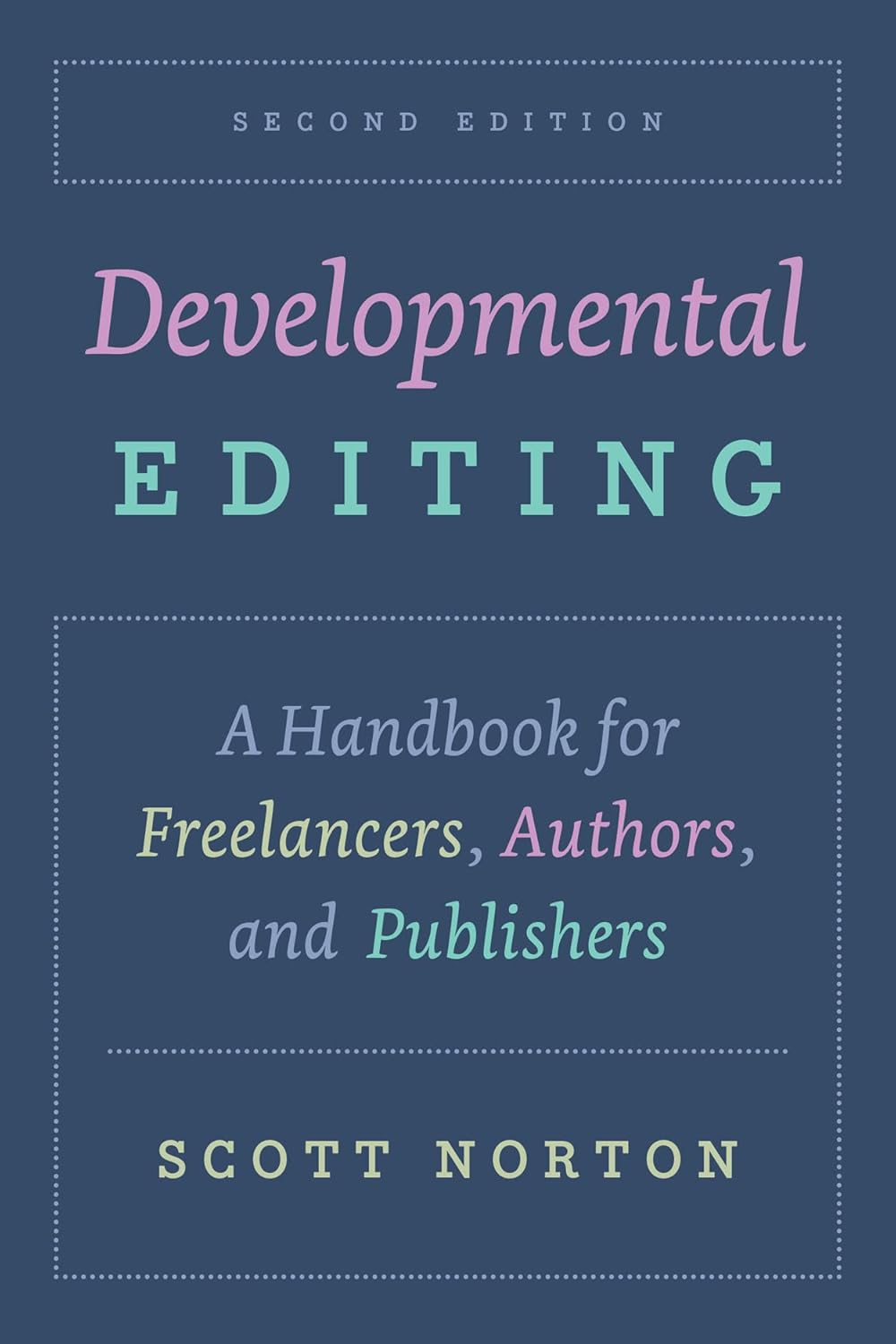
The only guide dedicated solely to developmental editing, now revised and updated with new exercises and a chapter on fiction.Developmental editing—transforming a manuscript into a book that edifies, inspires, and sells—is a special skill, and Scott Norton is one of the best at it. With more than three decades of experience in the field, Norton offers his expert advice on how to approach the task of diagnosing and fixing structural problems with book manuscripts in consultation with authors and publishers. He illustrates these principles through a series of detailed case studies featuring before-and-after tables of contents, samples of edited text, and other materials to make an otherwise invisible process tangible.This revised edition for the first time includes exercises that allow readers to edit sample materials and compare their work with that of an experienced professional as well as a new chapter on the unique challenges of editing fiction. In addition, it features expanded coverage of freelance business arrangements, self-published authors, e-books, content marketing, and more.Whether you are an aspiring or experienced developmental editor or an author who works alongside one, you will benefit from Norton’s accessible, collaborative, and realistic approach and guidance. This handbook offers the concrete and essential tools it takes to help books to find their voice and their audience.
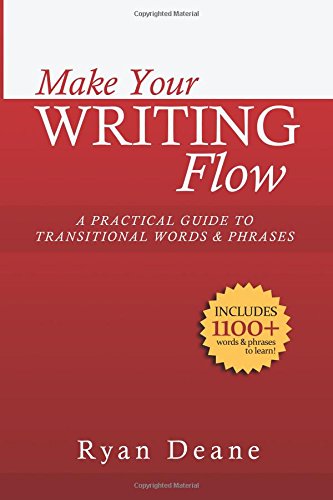
Take Your Writing To The Next Level With This Invaluable Reference Tool! For many aspiring writers, one of the biggest obstacles they face is the ability to write flowing sentences and paragraphs. How many times have you read a piece of writing and felt jarred by a poorly constructed passage? Trust me, you're not alone. The talent to string thoughts and ideas together in a way that's pleasing to a reader is what separates an amateur writer from a professional. Fortunately, this skill can be taught, and is the subject of this book. Ryan Deane has compiled a transitional words and phrases reference unlike anything ever published. This book is filled to the brim with words and phrases to help you build compelling sentences and paragraphs that will keep your readers thoroughly engaged.
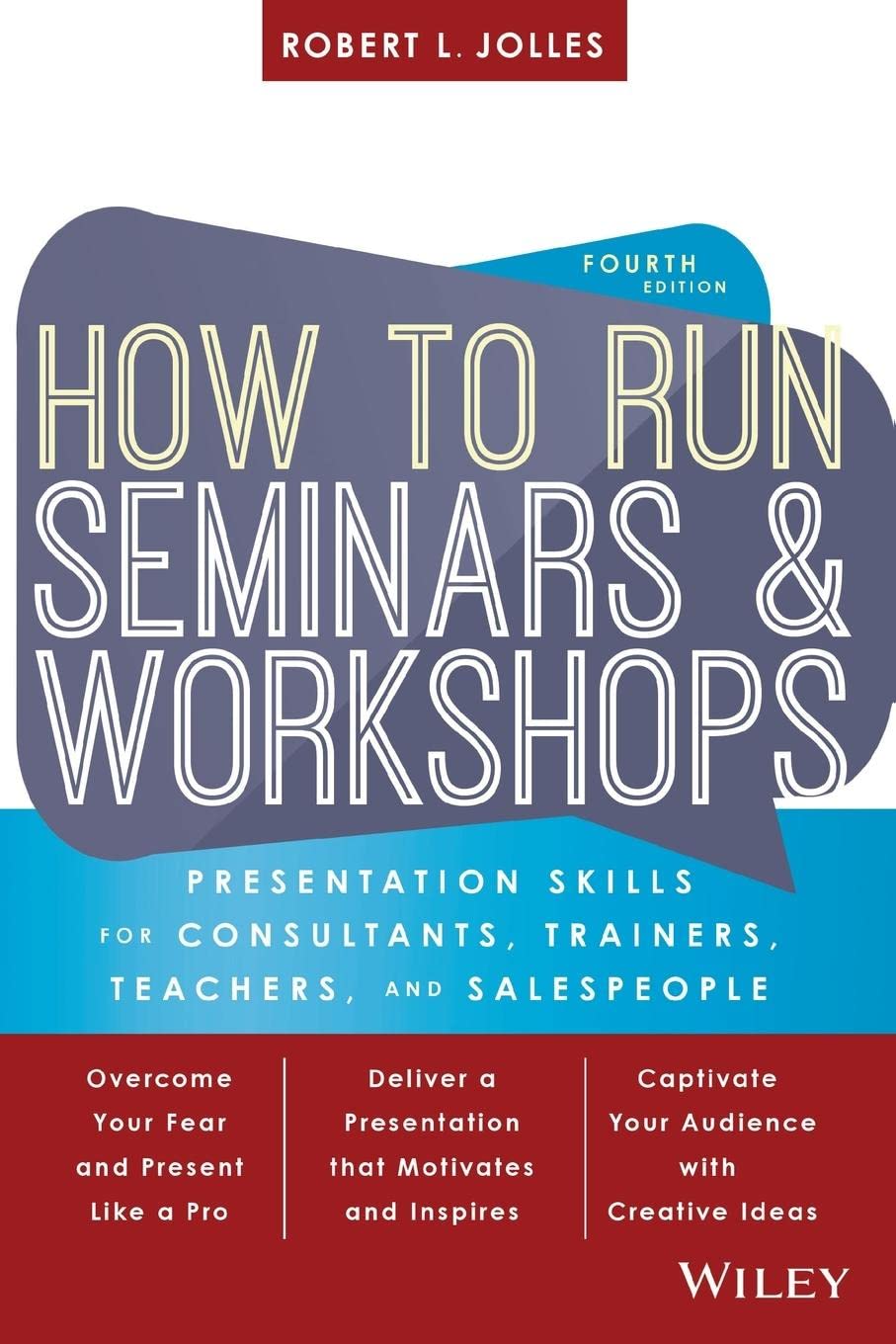
Make your message stick with expert help from this classic trainer's resourceHow to Run Seminars and Workshops is the classic guide for trainers and presenters in any industry. Packed with clear advice and real-world practicality, this book covers all aspects including planning, setup, delivery, coaching, and more―including valuable guidance on selling your services. This new Fourth Edition has been updated and expanded, with new information on training simulations, self-marketing, and online delivery. New templates and worksheets help you sell your presentation more effectively, and insider tips leave you equipped to handle any situation that might arise. Novice presenters will find extensive guidance for every phase of the process, and even veteran presenters will learn how to fine-tune and adjust their methods to suit their audience and mode of delivery.Most trainers and presenters know all they need to know about their chosen topic, but very few know how to present it effectively. For more than a decade, this book has been training the trainers―from behind-the-scenes preparations to "in the pit" performance and working with trainees hands-on, straightforward guidance shows you how to:
- Capture and hold the audience's interest with expert pacing and visual aids
- Take advantage of new technologies that make training more accessible
- Prepare each session thoroughly to avoid mistakes, malfunctions, and delays
- Offer effective feedback, fine-tune delivery, market your services, and more
As training departments shrink―many disappearing entirely―more and more companies are turning to keynote and workshop delivery as a way of reaching key clients. Podcasts are replacing live training, and new technology is continually changing the way presentations are made. Professional trainers and speakers must understand the nuances of any audience/delivery permutation, and tailor their methods to match. How to Run Seminars and Workshops is a trusted resource for presenters seeking to boost their effectiveness at any level, in any industry.
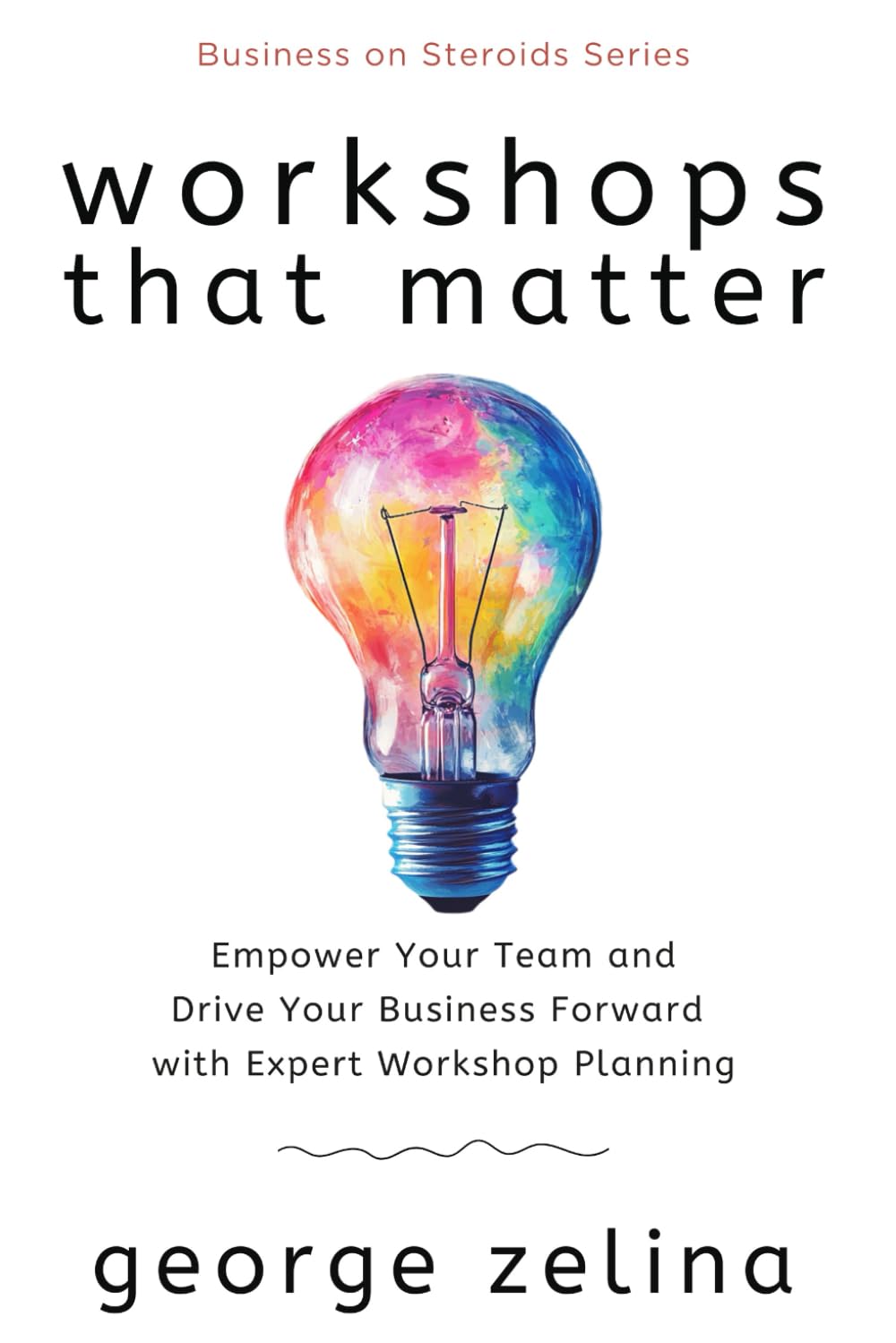
Revitalize your company and take your success to the next level with the power of productive brainstorming sessions! In this groundbreaking book, you'll discover the secrets to generating better ideas and faster results, improving collaboration and communication, and identifying root causes and solutions to complex problems.With expert guidance on simulating and exploring complex systems, interactions, and dynamics, you'll learn how to keep your business moving forward even in the face of rapid change and fierce competition. Whether you're struggling to get your company off the ground or looking to take your established enterprise to the next level, this book is the ultimate roadmap to success.Don't let your competition leave you in the dust. Take action now and unlock the full potential of your team with the power of effective brainstorming.
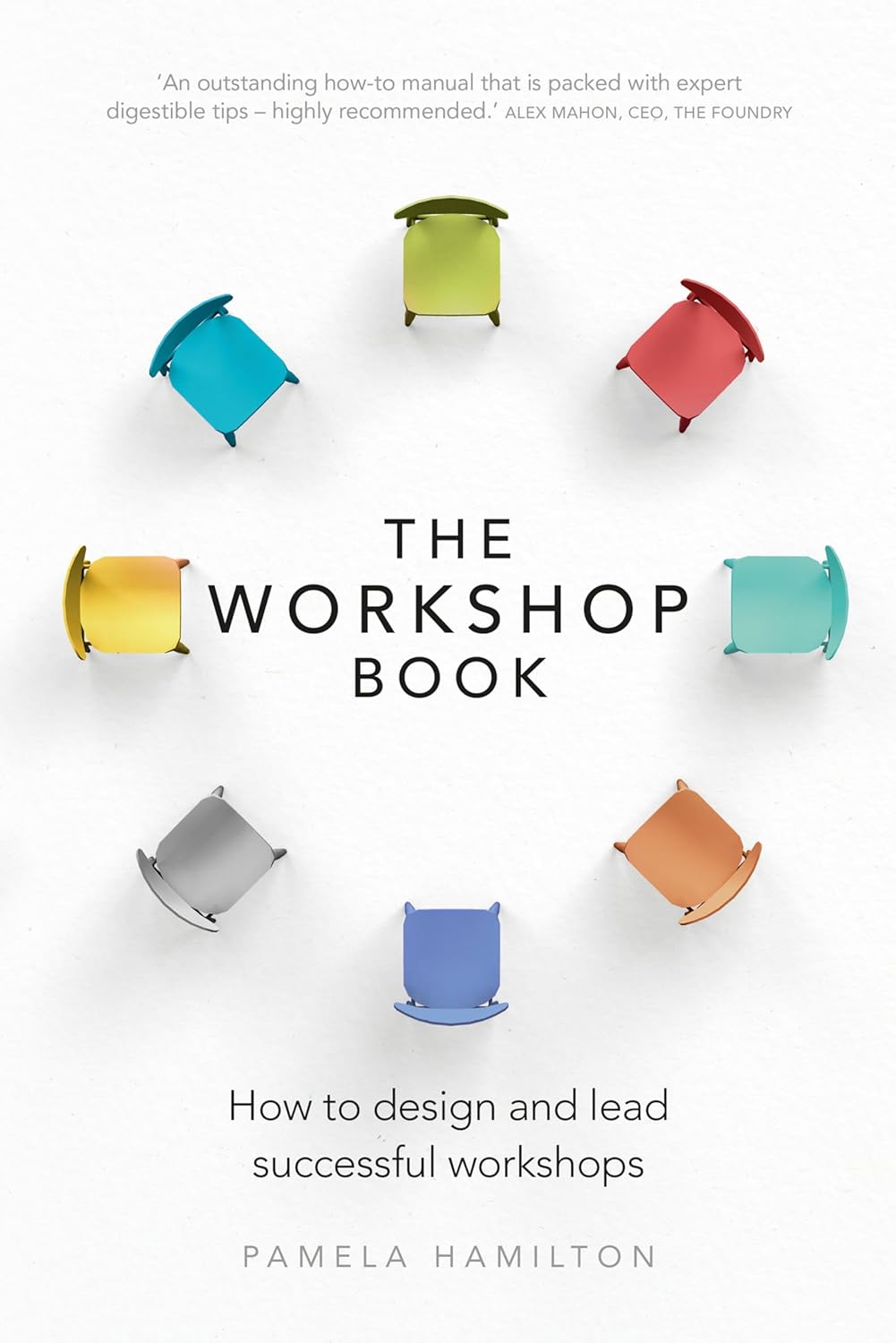
HE WORKSHOP BOOK TEACHES YOU HOW TO RUN AN EFFECTIVE WORKSHOP - EFFORTLESSLY.Based on methods developed - and proven – in business, this highly visual and practical book will show readers how to design, lead and run effective workshops.
- The tools you need to design and lead successful workshops yourself
- Ways to enhance the collective intelligence of any team, keeping them focussed and engaged
- Tricks and tips for structuring time to generate maximum productivity in a limited session
- Advice on how to find inspiration and creativity to generate great ideas for any industry or brief
- Workshop fundamentals, so you can add your own flair
Academic Writing
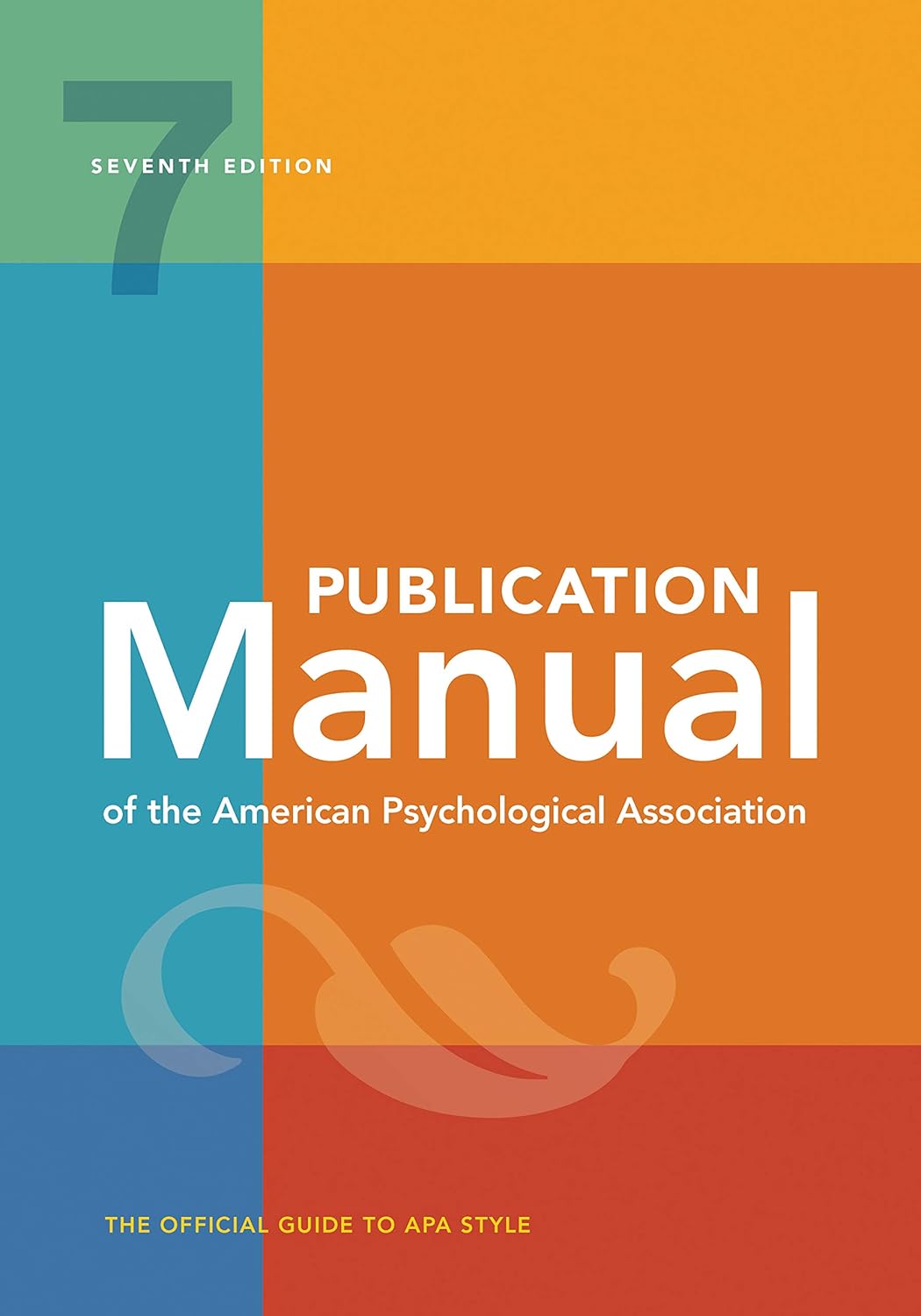
With millions of copies sold worldwide in multiple languages, the Publication Manual of the American Psychological Association, Seventh Edition is the style manual of choice for writers, researchers, editors, students, and educators in the social and behavioral sciences, natural sciences, nursing, communications, education, business, engineering, and other fields. Known for its authoritative, easy-to-use reference and citation system, the Publication Manual also offers guidance on choosing the headings, tables, figures, language, and tone that will result in powerful, concise, and elegant scholarly communication. It guides users through the scholarly writing process—from the ethics of authorship to reporting research through publication. The seventh edition is an indispensable resource for students and professionals to achieve excellence in writing and make an impact with their work. The seventh edition has been thoroughly revised and updated to reflect best practices in scholarly writing and publishing.
- All formats are in full color, with a new tabbed spiral version
- Easy navigation, with topics divided into numbered sections to help users quickly location the information they need
- Resources for students on writing and formatting annotated bibliographies, response papers, and other paper types, guidelines on citing course materials, and guidance on writing clearly, precisely, and concisely
- Dedicated chapter for new users of APA Style covering paper elements and format, including sample papers for both professional authors and student writers
- New chapter on journal article reporting standards (JARS) that includes updates to reporting standards for quantitative research and the first-ever qualitative and mixed methods reporting standards in APA Style
- Updated chapter on bias-free language guidelines for writing about people with respect and inclusivity in areas including age, disability, gender, participation in research, racial and ethnic identity, sexual orientation, socioeconomic status, and intersectionality
- Updated chapter on essential style guidelines for scholarly writing, including punctuation, italics, capitalization, abbreviations, and numbers
- More than 40 new sample tables and figures
- Expanded guidance on ethical writing and publishing practices, including how to ensure the appropriate level of citation, avoid plagiarism and self-plagiarism, and navigate the publication process
- More than 100 new reference examples covering periodicals, books, audiovisual media, social media, webpages and websites, legal resources, and many other document types
- Guidelines that support accessibility for all users, including simplified reference, in-text citation, and heading formats as well as additional font options
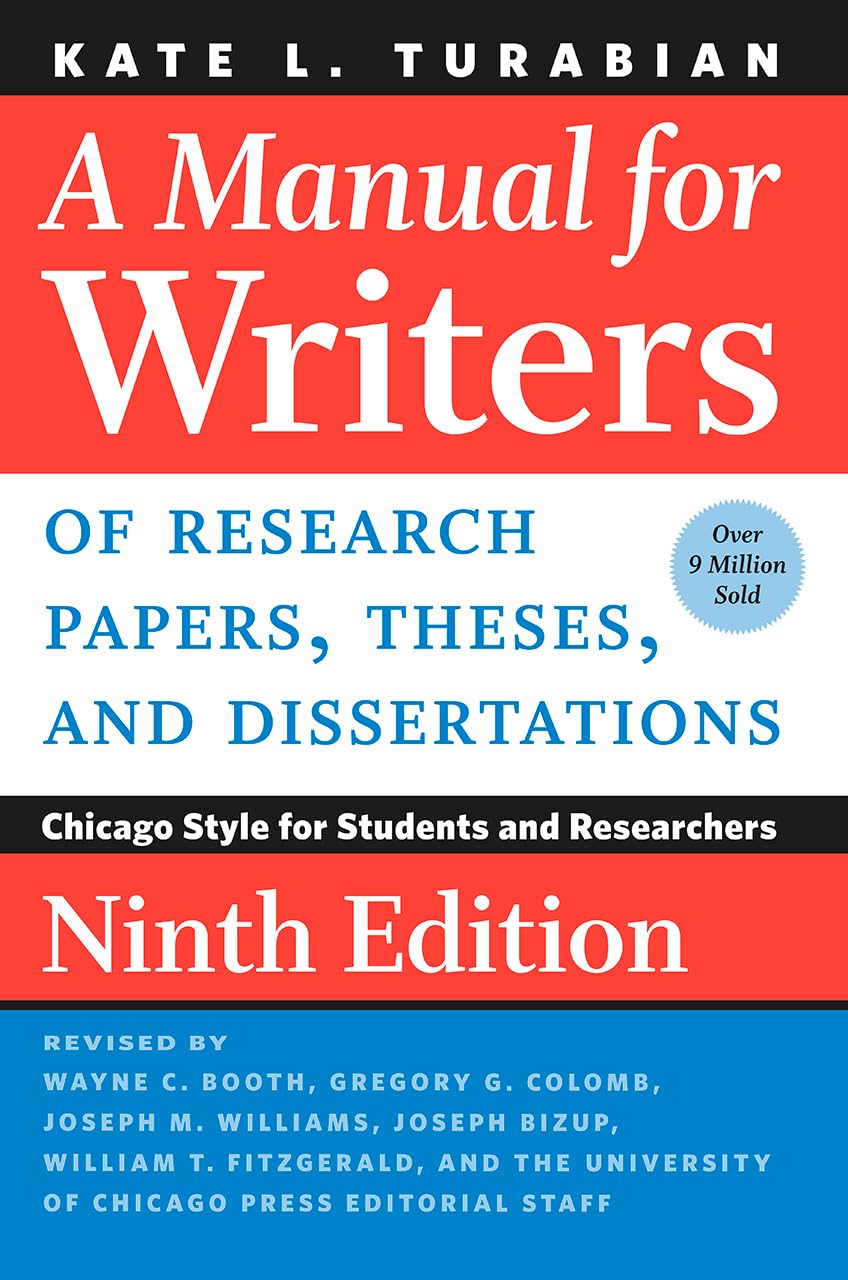
When Kate L. Turabian first put her famous guidelines to paper, she could hardly have imagined the world in which today’s students would be conducting research. Yet while the ways in which we research and compose papers may have changed, the fundamentals remain the same: writers need to have a strong research question, construct an evidence-based argument, cite their sources, and structure their work in a logical way. A Manual for Writers of Research Papers, Theses, and Dissertations—also known as “Turabian”—remains one of the most popular books for writers because of its timeless focus on achieving these goals.This new edition filters decades of expertise into modern standards. While previous editions incorporated digital forms of research and writing, this edition goes even further to build information literacy, recognizing that most students will be doing their work largely or entirely online and on screens. Chapters include updated advice on finding, evaluating, and citing a wide range of digital sources and also recognize the evolving use of software for citation management, graphics, and paper format and submission. The ninth edition is fully aligned with the recently released Chicago Manual of Style, 17th edition, as well as with the latest edition of The Craft of Research.Teachers and users of the previous editions will recognize the familiar three-part structure. Part 1 covers every step of the research and writing process, including drafting and revising. Part 2 offers a comprehensive guide to Chicago’s two methods of source citation: notes-bibliography and author-date. Part 3 gets into matters of editorial style and the correct way to present quotations and visual material. A Manual for Writers also covers an issue familiar to writers of all levels: how to conquer the fear of tackling a major writing project.Through eight decades and millions of copies, A Manual for Writers has helped generations shape their ideas into compelling research papers. This new edition will continue to be the gold standard for college and graduate students in virtually all academic disciplines.
- Bestselling, trusted, and time-tested advice for writing research papers
- The best interpretation of Chicago style for higher education students and researchers
- Definitive, clear, and easy to read, with plenty of examples
- Shows how to compose a strong research question, construct an evidence-based argument, cite sources, and structure work in a logical way
- Essential for anyone interested in learning about research
- Everything any student or teacher needs to know concerning paper writing
My Libary has the eighth edition.
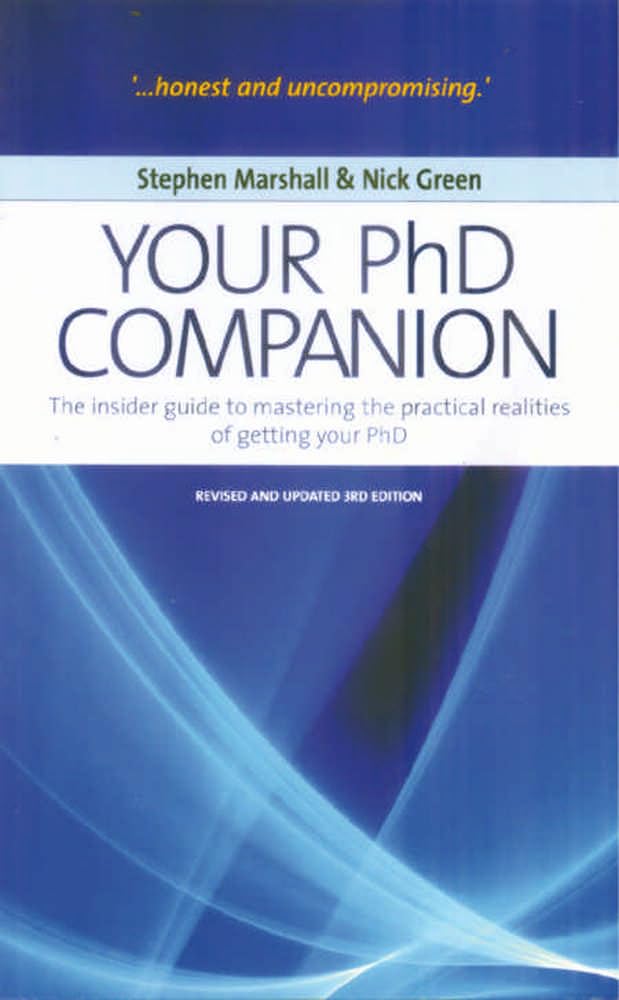
This book guides you through doctoral study from the student's point of view - the challenges, pitfalls, and ups and downs that you're likely to encounter in the course of your PhD. Inside you'll find: -Advice on doing research - Examples of PhD problems and their resolution - Reflections on life as a PhD student - Insights into how the academic system works - Real life cases of famous (and not so famous)PhD students. Over and above what your supervisors and university may have to offer, Your PhD Companion will help explain all kinds of things that no one ever seems to tell you - and you don't necessarily know to ask.

The dissertation process is one of endurance, willpower, and patience. To simplify the journey for today's graduate students, The Dissertation Desk Reference harvests the components that consistently appear in dissertations, with a separate entry for each component. Each entry includes a comprehensive example taken directly from a high-quality dissertation accompanied by a note describing what the researcher did. This book is user-friendly for doctoral students and their faculty advisors.
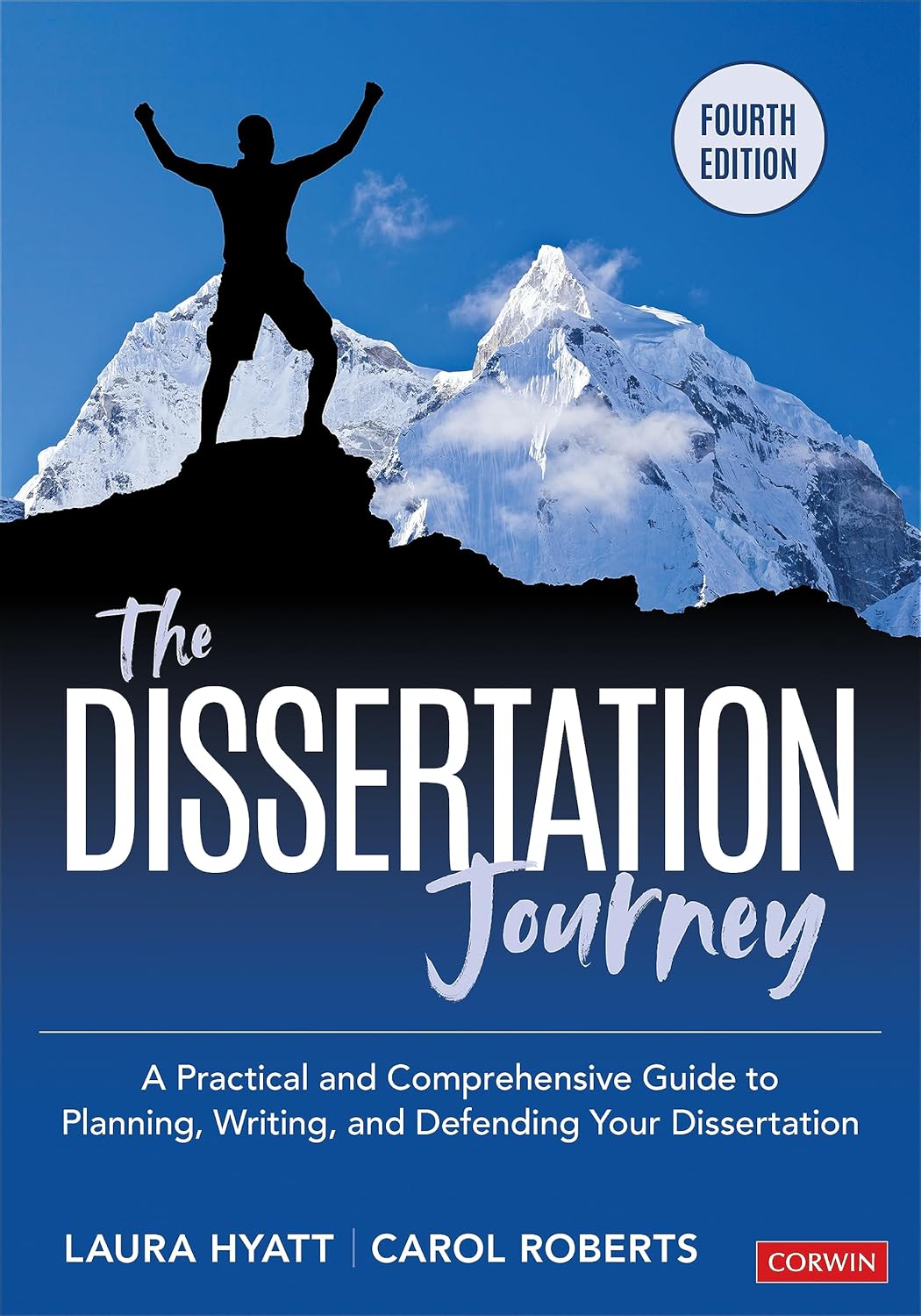
Reach the summit of the dissertation mountain.In many ways, the journey of completing a dissertation is like climbing a mountain. It requires planning, research, teamwork, and perseverance. In this fourth edition of their best-selling book, authors Laura Hyatt and Carol Roberts address the challenges that students will face as they journey to the peak of their academic career and complete their dissertation.Completing a dissertation is a transformative and fulfilling life experience. It requires knowledge, tenacity, and preparation for the inevitable uncertainties that will arise along the way. It also necessitates strategies and techniques for dealing with the unanticipated events that many dissertation writers face, such as procrastination, writer’s block, and the uncertainty of how to conduct a literature review or approach a methods section. This newly revised edition addresses those elements and also includes:
- Indispensable information for organizing and writing a dissertation
- Recommendations for identifying and writing research methods
- Expanded coverage of research ethics
- Insightful reflections from students who have effectively written and defended their dissertations
From preparing for the climb to enjoying the view from the summit, this book will assist you to successfully complete The Dissertation Journey.
My Library has the second edition
.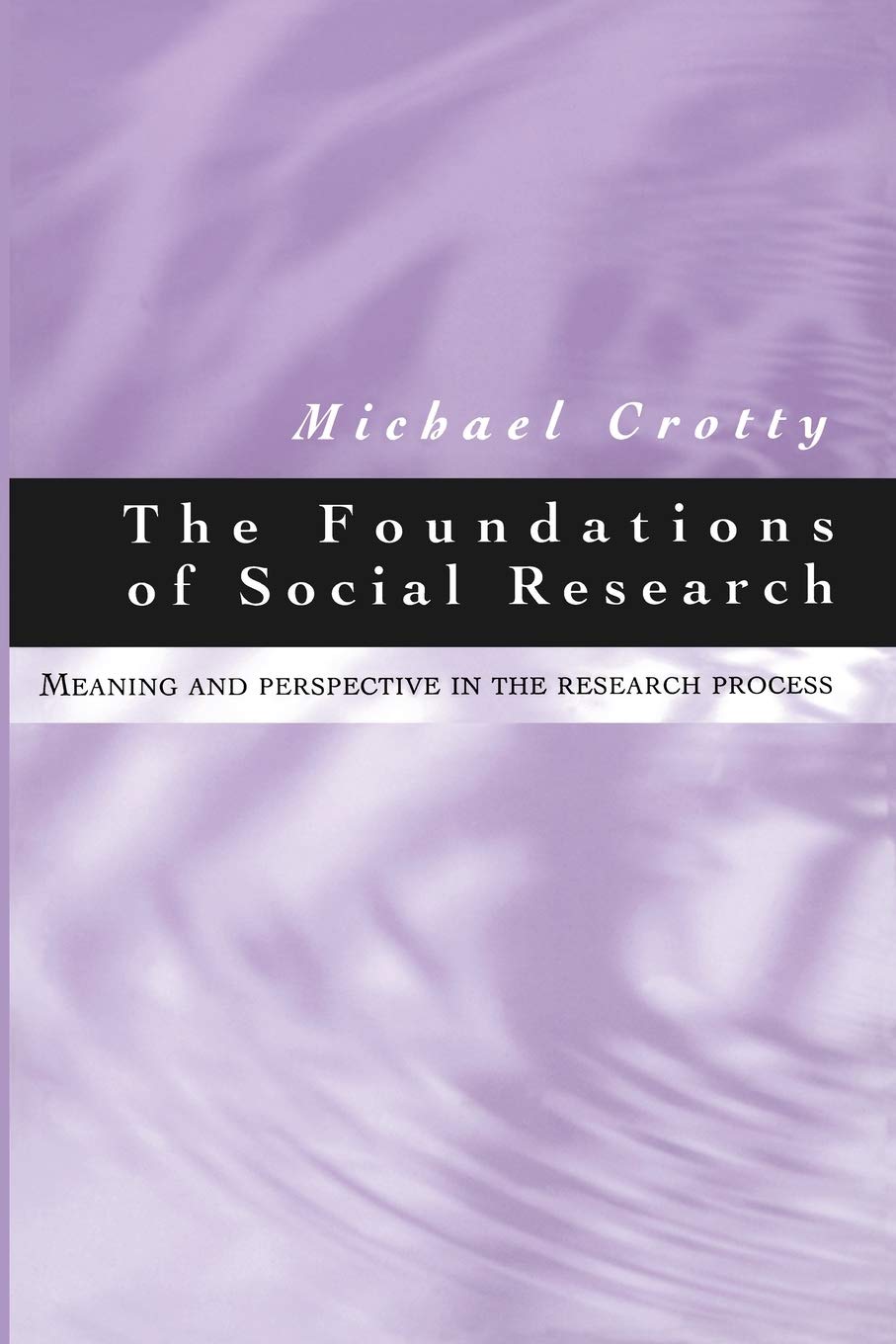
Choosing a research method can be bewildering. How can you be sure which methodology is appropriate, or whether your chosen combination of methods is consistent with the theoretical perspective you want to take? This book links methodology and theory with great clarity and precision, showing students and researchers how to navigate the maze of conflicting terminology. The major epistemological stances and theoretical perspectives that colour and shape current social research are detailed and the author reveals the philosophical origins of these schools of inquiry and shows how various disciplines contribute to the practice of social research as it is known today.
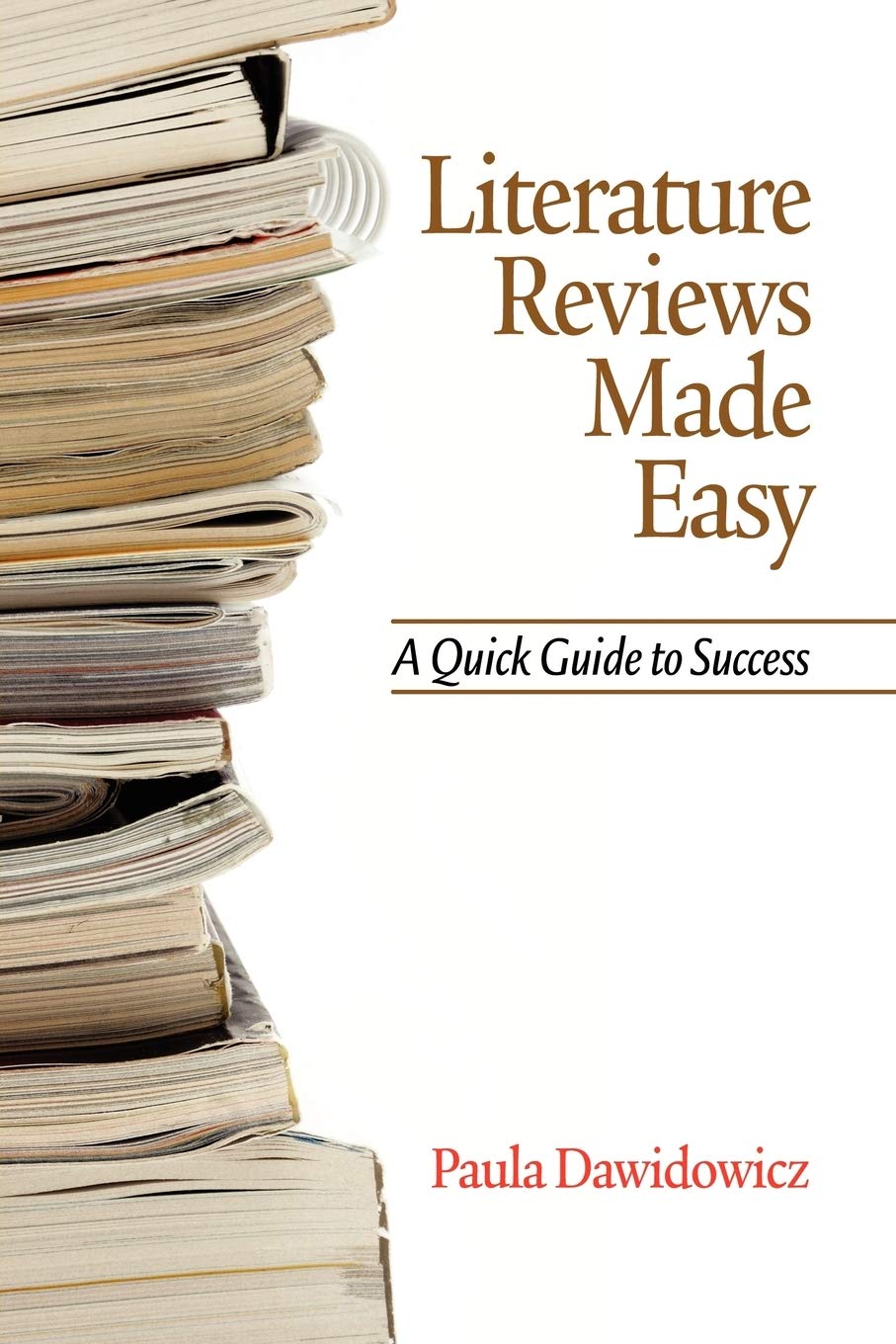
This book is designed to help you achieve one specific goal. It’s not designed to give you the philosophies of conducting research. It’s not designed to give you a background in a specific academic discipline or a specific topic. It’s not designed to give you theory. It’s designed specifically to instruct you in the practicalities of the writing process used to create strong, thorough, and potentially bulletproof literature reviews.This book is the culmination of years of research experience. It’s also the culmination of several years of teaching writing and critical thinking to doctoral students. Although it began as a tool for doctoral students, it has been expanded to be useful for everyone from senior high school students through doctoral candidates working on developing their first literature review or a larger literature review than they normally develop. It has been created for everyone from academics to new business entrepreneurs with good ideas who are trying to write their first reviews to support the new idea they’re proposing.

This Second Edition of Diana Ridley′s bestselling guide to the literature review outlines practical strategies for reading and note taking, and guides the reader on how to conduct a systematic search of the available literature, and uses cases and examples throughout to demonstrate best practice in writing and presenting the review. New to this edition are examples drawn from a wide range of disciplines, a new chapter on conducting a systematic review, increased coverage of issues of evaluating quality and conducting reviews using online sources and online literature and enhanced guidance in dealing with copyright and permissions issues.
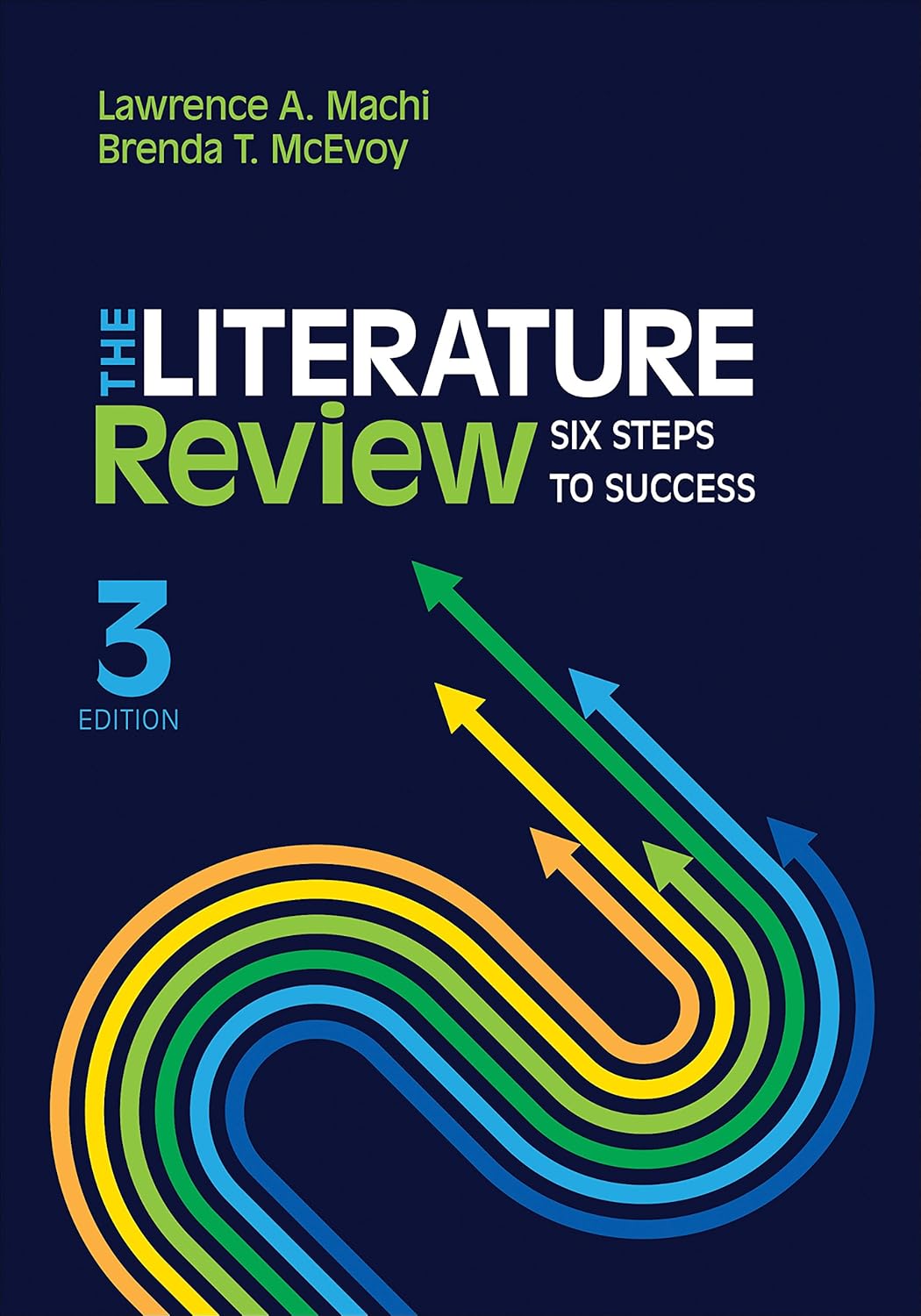
From daunting to doable in six steps Graduate students who turn in exceptional literature reviews are recognized as excellent critical thinkers, as well as masters of academic argumentation, research writing and writing academic papers. But literature searches and composing the review itself can be intimidating and frustrating. The six-step process pioneered by this book has made the task flowing and seamless for masters and doctoral candidates in Education and related fields. This updated third edition features a wealth of all-new content including:
- A flowchart that graphically illustrates Machi and McEvoy’s process.
- Reflective Oversight boxes in each chapter that prompt readers to direct metacognitive activities.
- Links to online guides and resources.
- Expanded examples illustrating theoretical concepts.
When you apply this system to your next literature review the work will be intuitive and enjoyable for you, and the results will impress your teachers and fellow researchers.
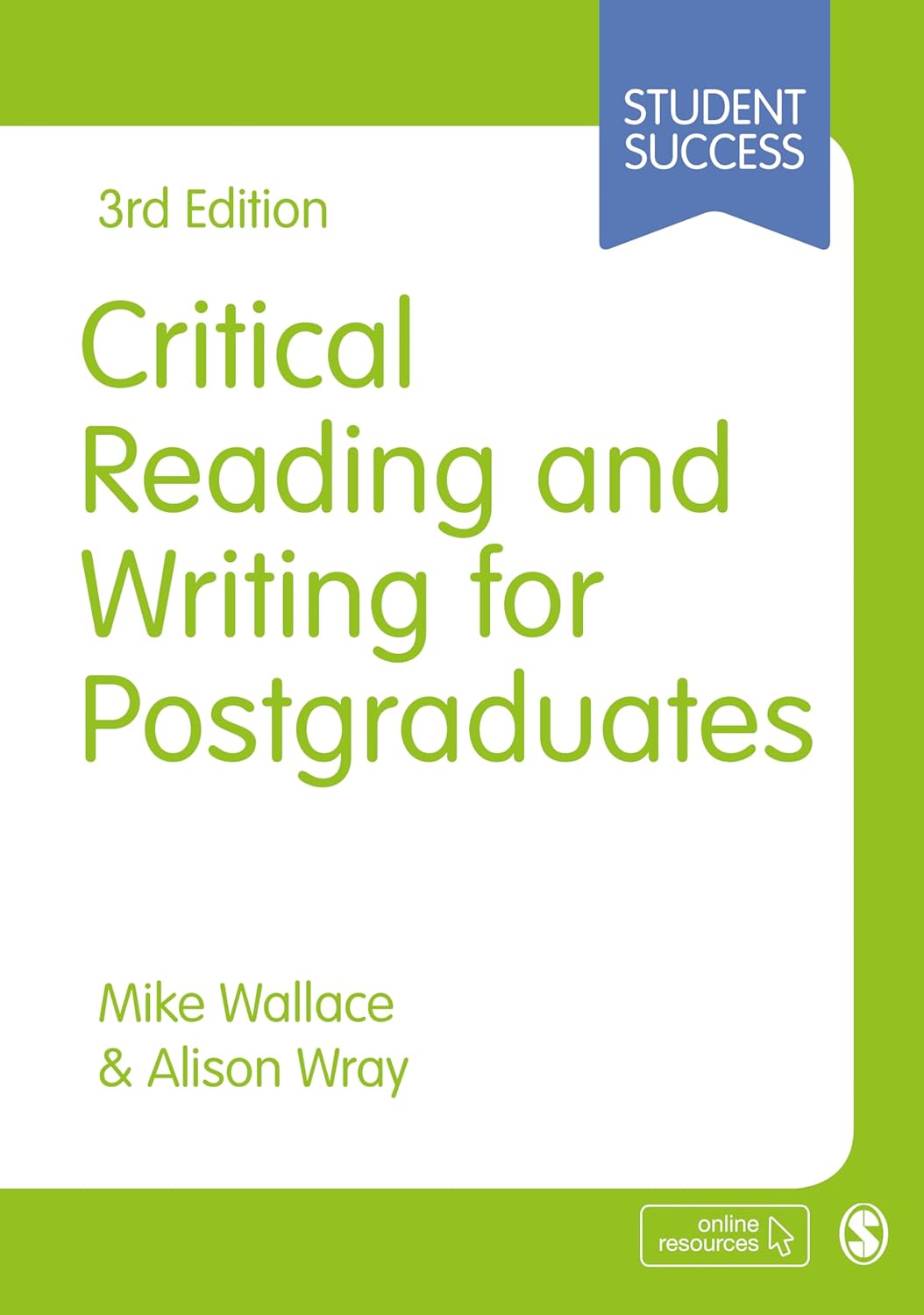
Reading critically, and writing using critical techniques, are crucial skills you need to apply to your academic work. Practical and engaging, Critical Reading and Writing for Postgraduates is bursting with tools for analysing texts and structuring critical reviews, helping you to gradually build your skills beyond undergraduate level and gain confidence in your ability to critically read and write. New to this 3rd edition:
- Introduces a technique for developing critical thinking skills by interrogating paper abstracts
- Additional diagrams, exercises and concept explanations, enabling you to more easily understand and apply the various approaches
- A glossary, to help with understanding of key terms.
Also new for this edition, a Companion Website provides additional resources to help you apply the critical techniques you learn. From templates and checklists, access to SAGE journal articles and additional case studies, these free resources will make sure you successfully master advanced critical skills.
If you need to engage with published (or unpublished) literature such as essays, dissertations or theses, research papers or oral presentations, this proven guide helps you develop a reflective and advanced critical approach to your research and writing.
The Student Success series are essential guides for students of all levels. From how to think critically and write great essays to planning your dream career, the Student Success series helps you study smarter and get the best from your time at university.
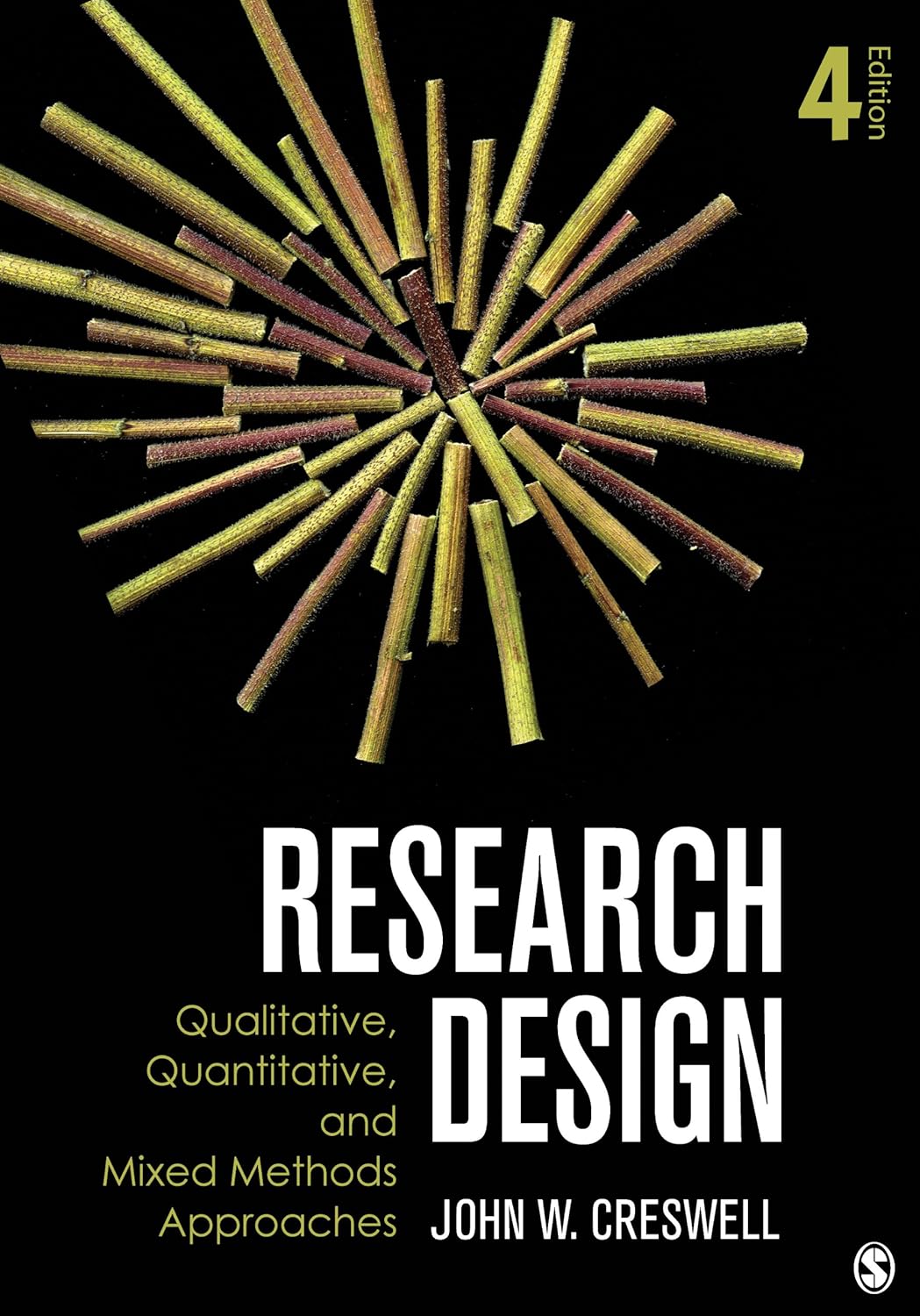
The eagerly anticipated Fourth Edition of the title that pioneered the comparison of qualitative, quantitative, and mixed methods research design is here! For all three approaches, Creswell includes a preliminary consideration of philosophical assumptions, a review of the literature, an assessment of the use of theory in research approaches, and reflections about the importance of writing and ethics in scholarly inquiry. He also presents the key elements of the research process, giving specific attention to each approach. The Fourth Edition includes extensively revised mixed methods coverage, increased coverage of ethical issues in research, and an expanded emphasis on worldview perspectives.
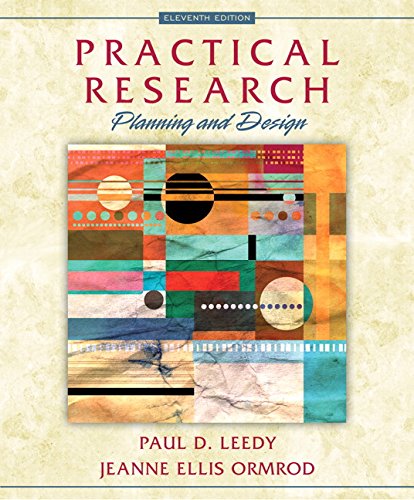
Engaging and cross-disciplinary, Practical Research: Planning and Design is a do-it-yourself, understand-it-yourself manual for planning and conducting research. Suitable for a wide variety of courses in basic research methodology, the text guides the reader, step-by-step, from the selection of a problem, through the process of conducting authentic research, to the preparation of a completed report, with practical suggestions throughout. The authors emphasize the idea that quality research demands planning and design, and they provide what is needed for readers to be able to execute their own research projects effectively and professionally.
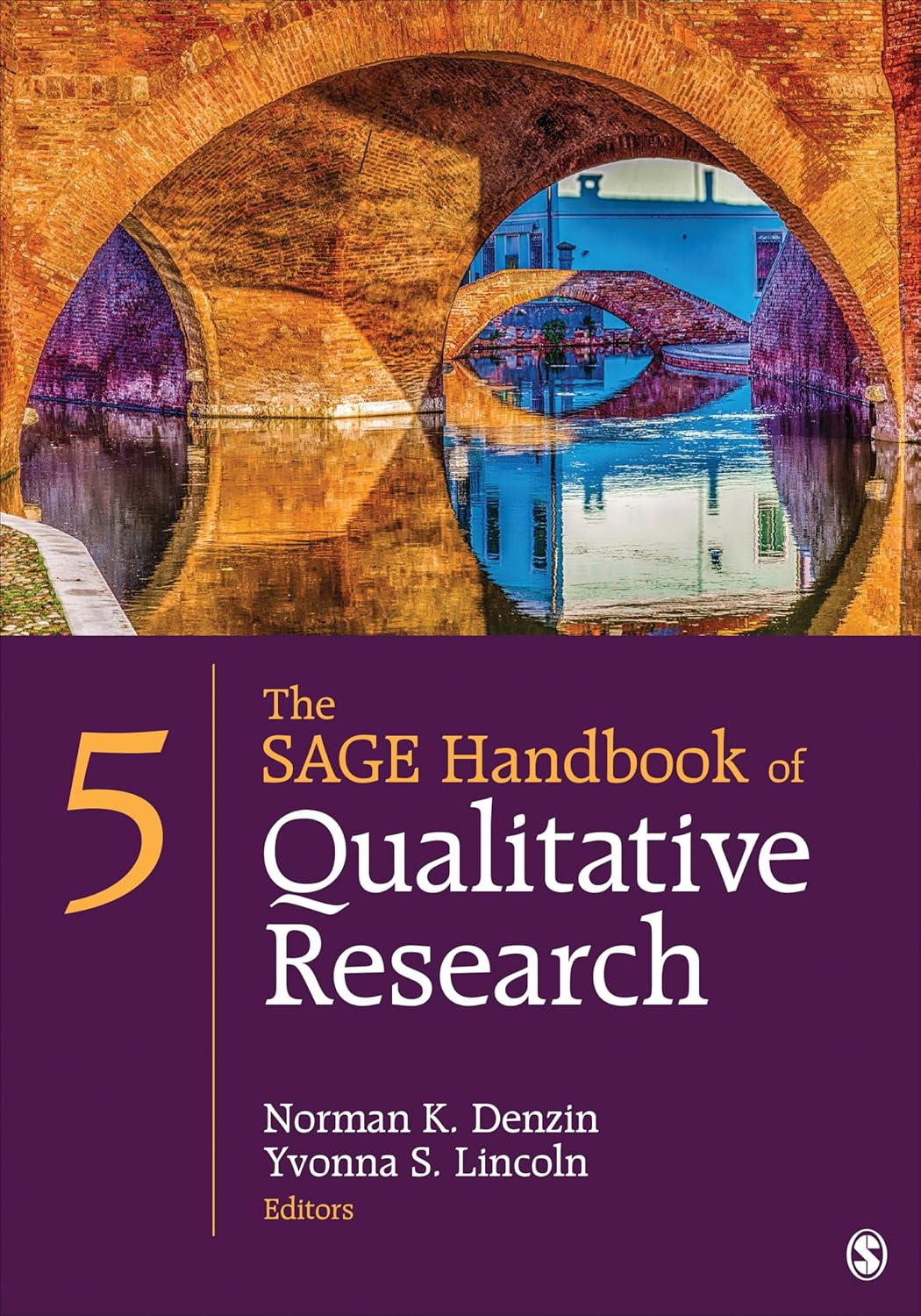
The substantially updated and revised Fifth Edition of The SAGE Handbook of Qualitative Research by editors Norman K. Denzin and Yvonna S. Lincoln presents the state-of-the-art theory and practice of qualitative inquiry. Representing top scholars from around the world, the editors and contributors continue the tradition of synthesizing existing literature, defining the present, and shaping the future of qualitative research. The Fifth Edition contains 19 new chapters, with 16 revised―making it virtually a new volume―while retaining six classic chapters from previous editions. New contributors to this edition include Jamel K. Donnor and Gloria Ladson-Billings; Margaret Kovach; Paula Saukko; Bryant Keith Alexander; Thomas A. Schwandt and Emily F. Gates; Johnny Saldaña; Uwe Flick; Mirka Koro-Ljungberg, Maggie MacLure, and Jasmine Ulmer; Maria Elena Torre, Brett G. Stoudt, Einat Manoff, and Michelle Fine; Jack Bratich; Svend Brinkmann; Eric Margolis and Renu Zunjarwad; Annette N. Markham; Alecia Y. Jackson and Lisa A. Mazzei; Jonathan Wyatt, Ken Gale, Susanne Gannon, and Bronwyn Davies; Janice Morse; Peter Dahler-Larsen; Mark Spooner; and David A. Westbrook.
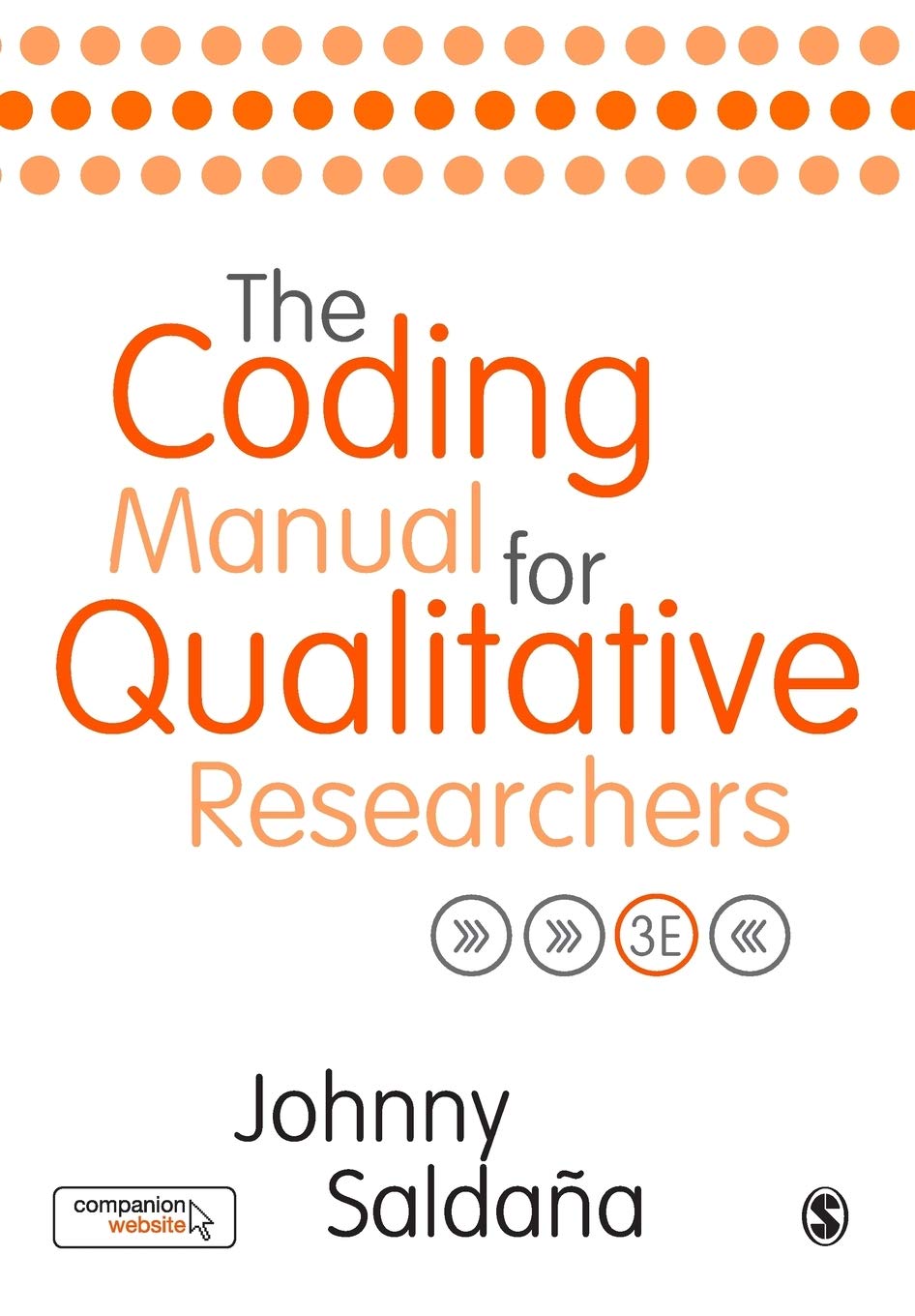
Johnny Saldaña’s unique and invaluable manual demystifies the qualitative coding process with a comprehensive assessment of different coding types, examples and exercises. The ideal reference for students, teachers, and practitioners of qualitative inquiry, it is essential reading across the social sciences and neatly guides you through the multiple approaches available for coding qualitative data.Its wide array of strategies, from the more straightforward to the more complex, is skillfully explained and carefully exemplified providing a complete toolkit of codes and skills that can be applied to any research project. For each code Saldaña provides information about the method′s origin, gives a detailed description of the method, demonstrates its practical applications, and sets out a clearly illustrated example with analytic follow-up. Now with a companion website, the book is supported by:
- SAGE journal articles showing coding being applied to real research
- Sample transcripts highlighting coding techniques
- Links to CAQDAS sites to introduce relevant software
- Practical student exercises Links to video and digital content
This international bestseller is an extremely usable, robust manual and is a must-have resource for qualitative researchers at all levels.
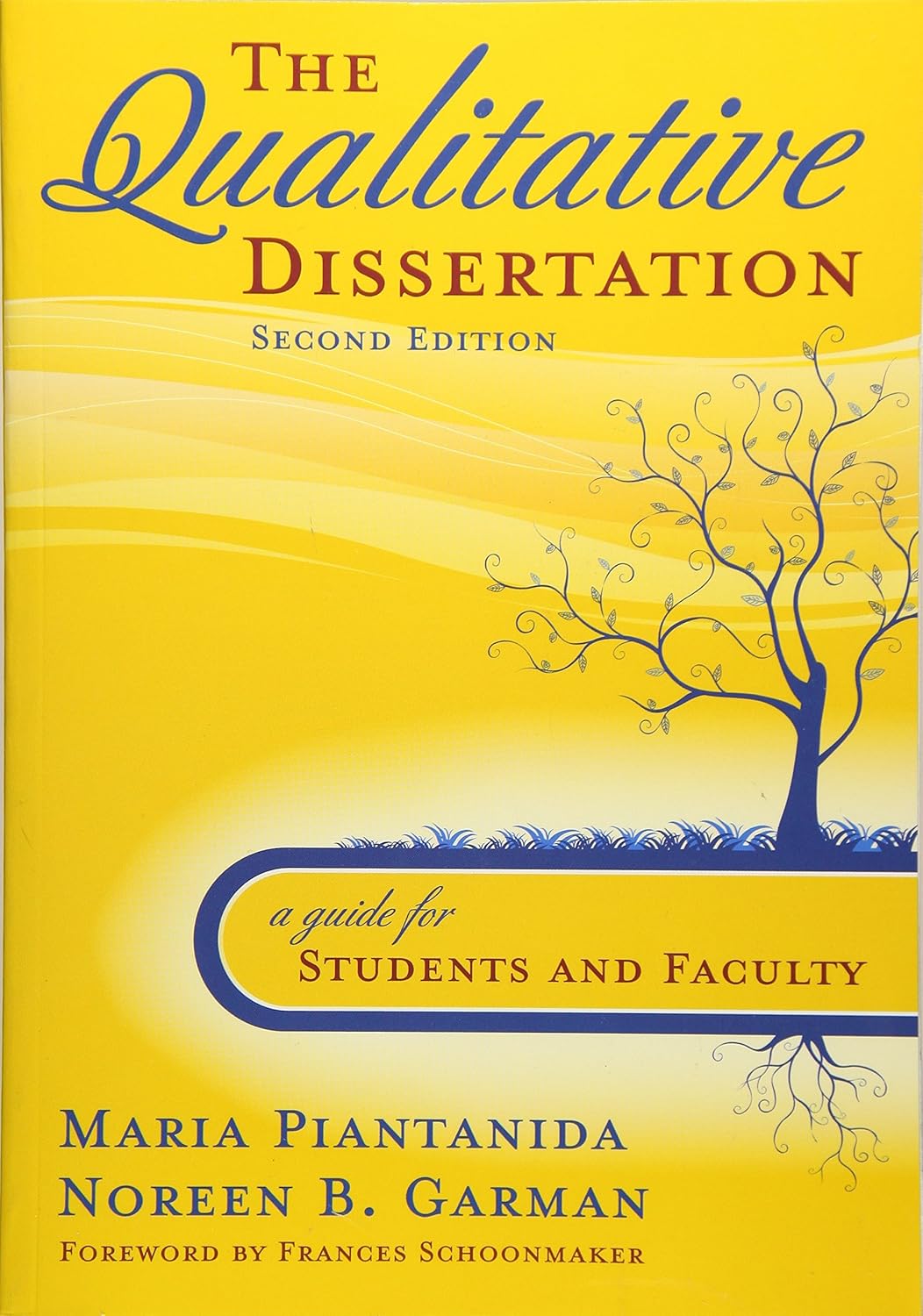
Most dissertation guides offer a basic recipe for the research and writing process. Like those books, this resource provides all the necessary steps for crafting and conducting a qualitative dissertation, but it also adds one key ingredient: reflection.This book guides students through the issues and questions that may arise as they conduct qualitative research, taking a reflective, experiential approach to turn student-researchers into instruments of inquiry. The authors show readers how to integrate themselves into the research and writing process by using their own beliefs, experiences, interests, and strengths.
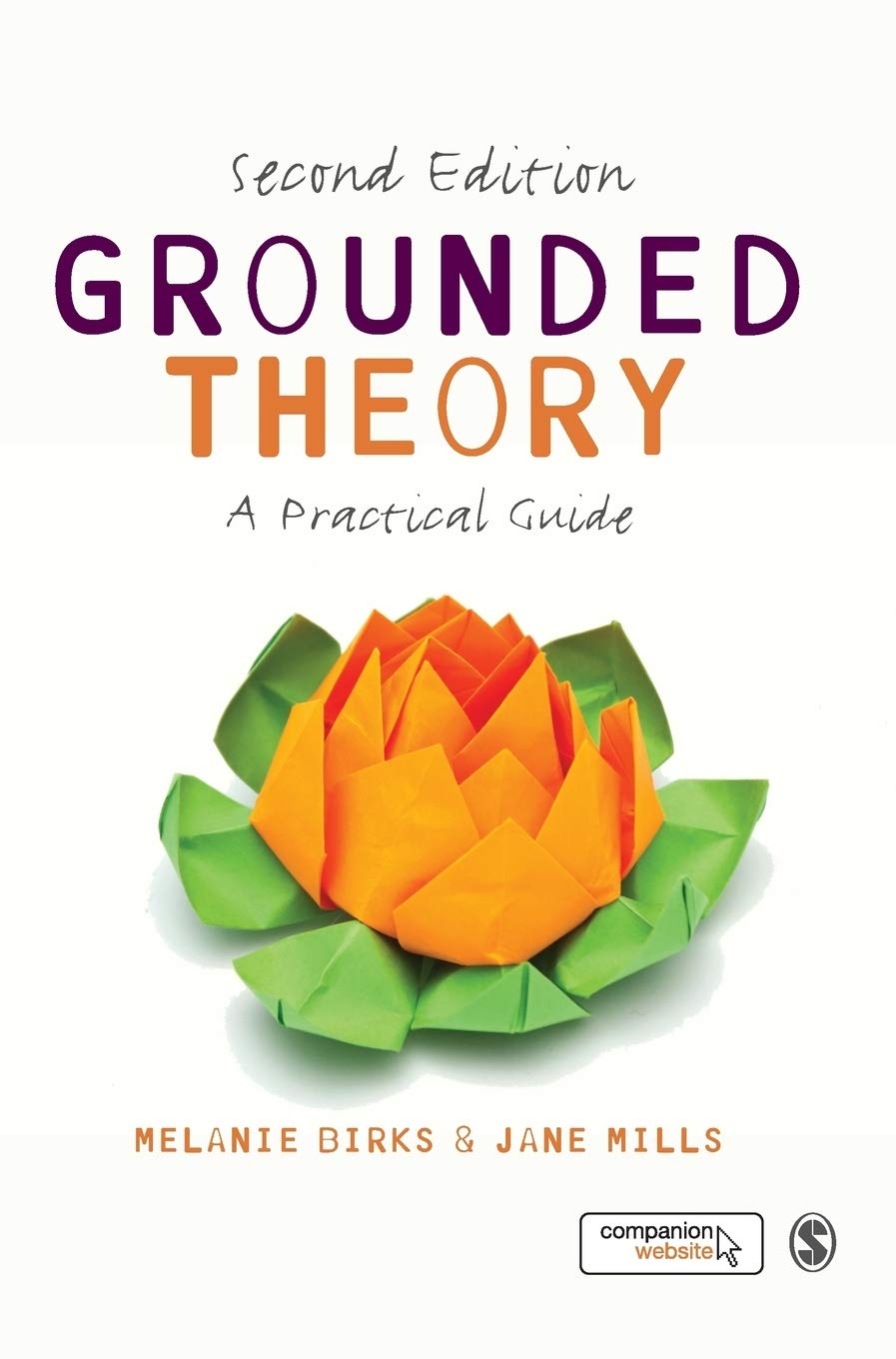
This highly practical book introduces the whole range of grounded theory approaches, providing a comprehensive description of the strategies and techniques employed in this methodology. Unlike most existing books in this area, it is not written from a particular philosophical standpoint, and is the ideal first introduction for any student or researcher looking to use grounded theory in their analysis for the first time.Birks and Mills’ accessible and highly-readable text is driven by practical case examples throughout to help the reader get to grips with the process of doing grounded theory analysis for themselves. The book deploys a variety of educational activities to guide readers through both the principles and the application of grounded theory, making this an ideal starter text for those new to the approach.This updated Second Edition:
- guides the reader through each step of the grounded theory process
- clearly explains how to memo effectively, using examples
- includes a chapter which explains the difference between data generation and collection
- features information on how to use digital resources to manage data
- discusses the philosophy and ethics of grounded theory within the qualitative paradigm.
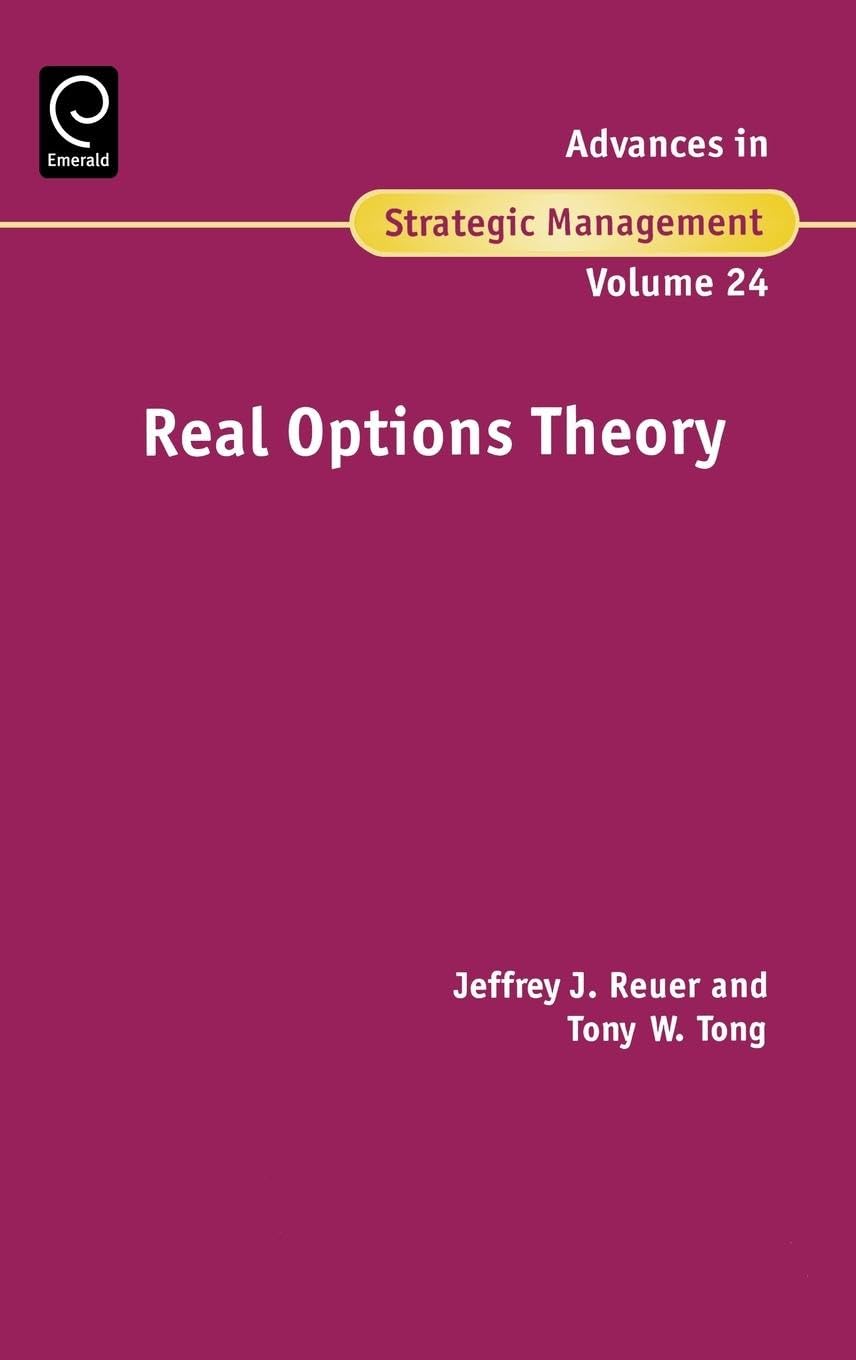
Real options theory has attracted significant interest in the field of strategic management. Advocates of the approach emphasize that importing concepts from financial economics holds out the potential of yielding new insights on strategic decision-making under uncertainty as well as boundary-of-the-firm issues that are the focus of competitive and corporate strategy. While considerable progress has been made in conceptualizing different types of real options for various strategic investments, considerably less has been done to empirically validate the core propositions of real options theory. As a result there is much debate about the merits and promise of real options in strategy.In light of the recent interest in real options as well as these trends in the field, this volume examines the ways in which real options theory can contribute to strategic management. This volume offers conceptual pieces that trace out pathways for the theory to move forward and presents new research on the implications of real options for strategic investment, organization, and firm performance. The compendium synthesizes and critiques the research on real options as well as offers a catalyst for further research on this theory in the strategy field. It seeks to examine the ways in which real options theory can contribute to strategic management. It includes conceptual pieces that unearth some of the key stumbling blocks and trace out pathways for real options theory to move forward. It presents theoretical and empirical analyses of real options in different strategic contexts.
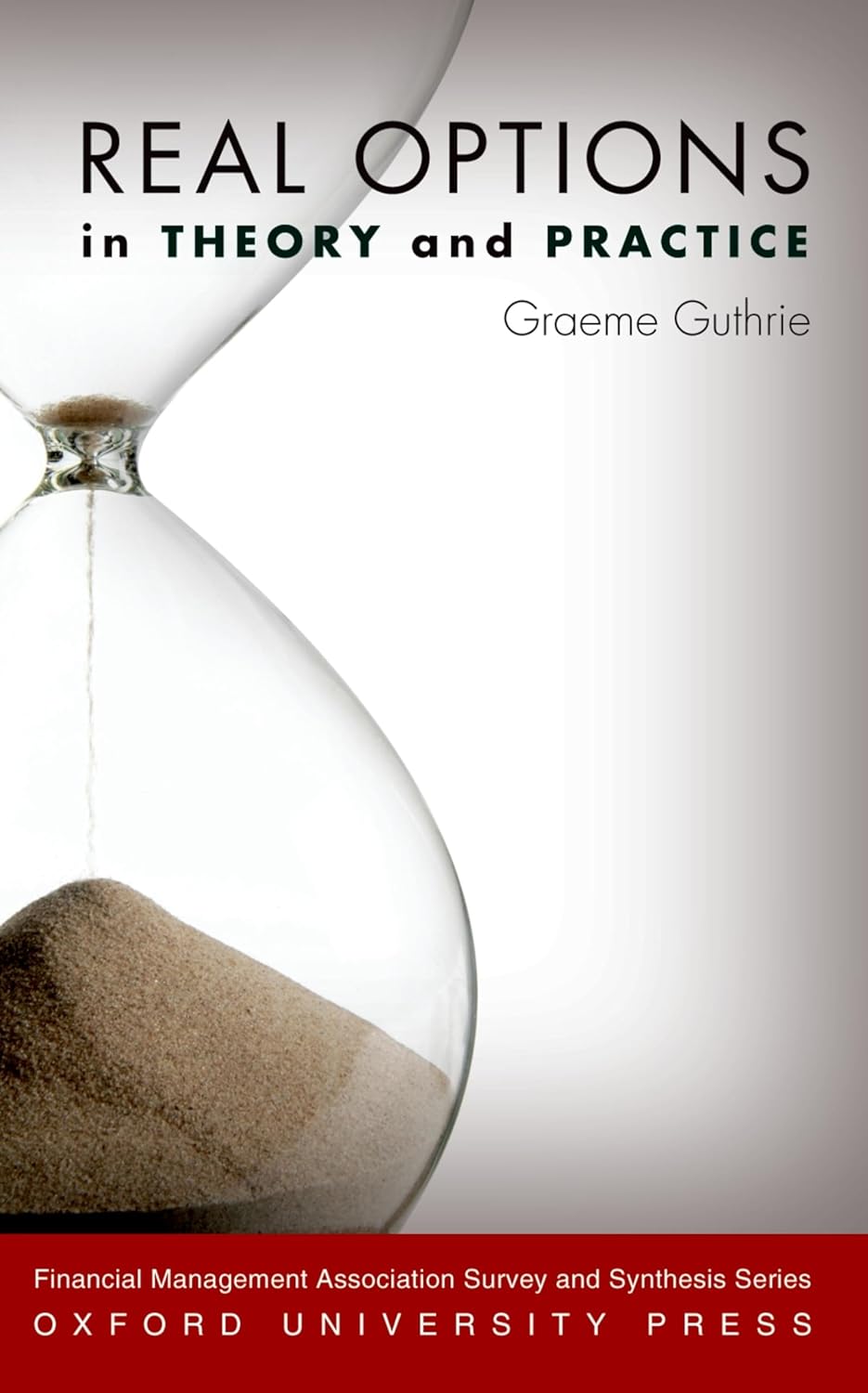
Decision-makers in business and economics face a staggering array of problems. For example, managers of growing firms have to decide when to expand their business, governments have to decide whether to undertake large infrastructure investments, and managers of oil firms must decide how rapidly to deplete their reserves. While these problems seem quite diverse, they all share many important features. In each case, the decision-maker must choose when to take a particular action that will be potentially impossible to reverse, and the consequences of taking (or not taking) that action are uncertain. Also, the timing and nature of these actions directly affect the cash flows generated by the entities they manage. This book explains how techniques originally developed to price financial derivatives can be used to analyze real-world decisions, and provides the tools necessary to put them into practice. The real options analysis approach to decision-making is built on strong theoretical foundations, and is widely discussed in practitioner literature, but often only at a fairly intuitive level. What practitioners need-and what this book delivers-is a structured approach to systematically applying real options analysis to the wide variety of problems they will meet in business and economics.Real Options in Theory and Practice focuses on building up a general approach to solving real options problems from the ground up. Rather than aiming to build a "black box" to solve a small set of standardized real options problems, it describes the building blocks of any successful real options analysis and shows how they can be assembled in a way that is appropriate to the problem being analyzed. For both practitioners and academics, Real Options in Theory and Practice will serve as an authoritative and invaluable resource for those looking for effective and practical solutions to complex, real-life problems.
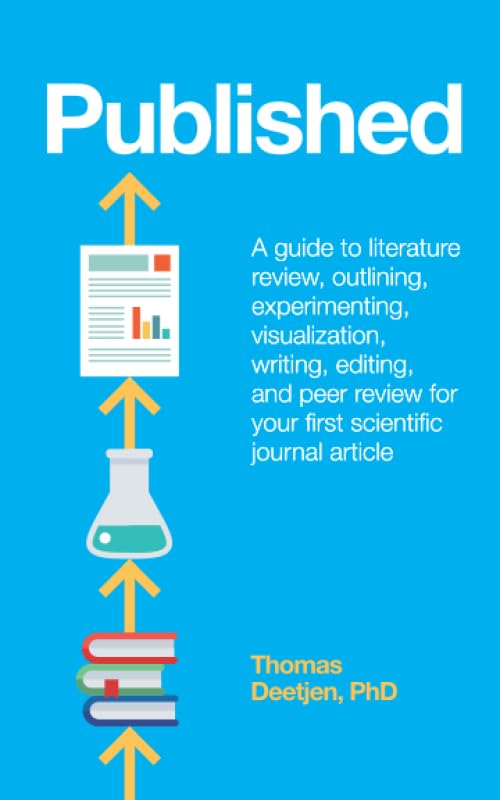
From research topic to journal article in seven clear stepsAre you feeling frustrated with your research? While many books teach only individual research skills, Published provides the breadth to guide you through your research journey from start to finish. This book organizes the research process into seven clear phases. And it walks you through each phase with step-by-step instruction. Published offers the clarity, direction, and encouragement you need to drive your project all the way to publication.
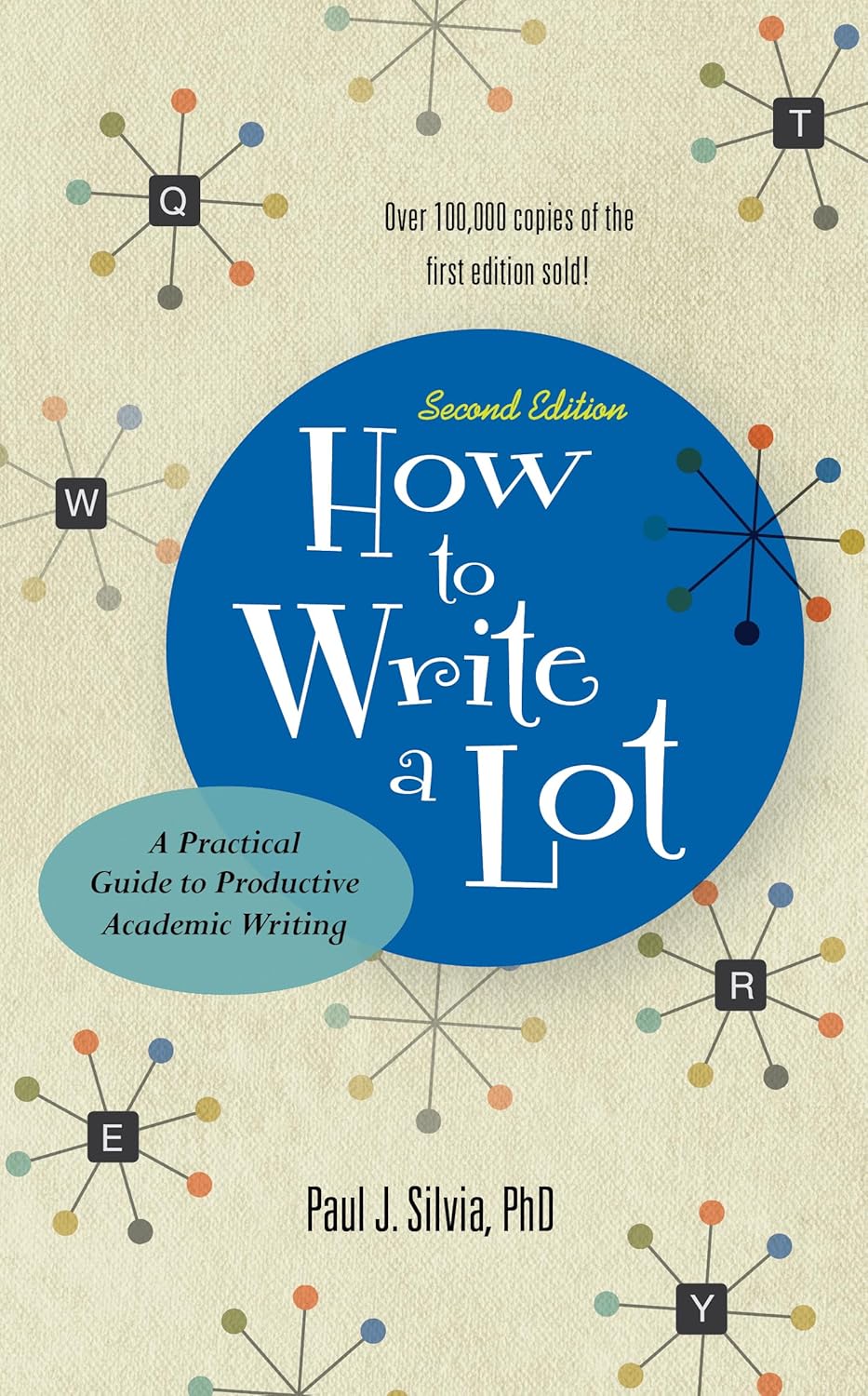
All academics need to write, but many struggle to finish their dissertations, articles, books, or grant proposals. Writing is hard work and can be difficult to wedge into a frenetic academic schedule. How can we write it all while still having a life? In this second edition of his popular guidebook, Paul Silvia offers fresh advice to help you overcome barriers to writing and use your time more productively. After addressing some common excuses and bad habits, he provides practical strategies to motivate students, professors, researchers, and other academics to become better and more prolific writers. Silvia draws from his own experience in psychology to explain how to write, submit, and revise academic work, from journal articles to books, all without sacrificing evenings, weekends, and vacations. The tips and strategies in this second edition have been updated to apply to academic writing in most disciplines. Also new to this edition is a chapter on writing grant and fellowship proposals.
Professional Writing

Information security teams are charged with developing and maintaining a set of documents that will protect the assets of an enterprise from constant threats and risks. In order for these safeguards and controls to be effective, they must suit the particular business needs of the enterprise.A guide for security professionals, Building an Effective Information Security Policy Architecture explains how to review, develop, and implement a security architecture for any size enterprise, whether it is a global company or a SMB. Through the use of questionnaires and interviews, the book demonstrates how to evaluate an organization’s culture and its ability to meet various security standards and requirements. Because the effectiveness of a policy is dependent on cooperation and compliance, the author also provides tips on how to communicate the policy and gain support for it.Suitable for any level of technical aptitude, this book serves a guide for evaluating the business needs and risks of an enterprise and incorporating this information into an effective security policy architecture.
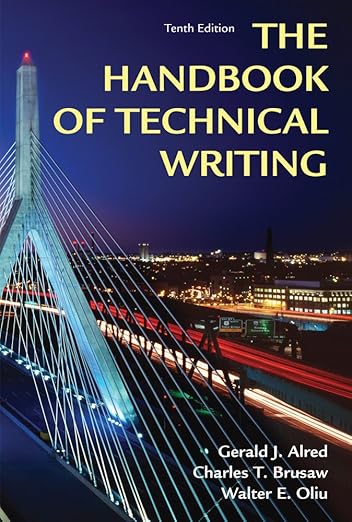
Now in its tenth edition, this classic book remains the complete technical-writing reference for students and professionals alike. Alphabetically organized and easy-to-use, its nearly 400 entries provide guidance for writing all the most common types of professional documents and correspondence, including reports, proposals, manuals, memos, and white papers. Abundant real-world sample documents and visuals throughout the book demonstrate effective technical communication, reflecting current practices for formatting documents and using email. In addition, advice for organizing, researching, writing, and revising complements thorough treatment of grammar, usage, style, and punctuation to provide comprehensive help with writing skills.This edition has been thoroughly revised to include updated advice for analyzing the context of different writing situations, using and integrating visuals, and dealing with ethical concerns in technical writing. Expanded coverage of the latest types of writing for the Web discusses FAQs and blogs as forms of collaborative writing and business promotion. New Digital Tips focus on using technology to assist with writing tasks, such as using wikis for collaborative documents.Entries throughout the book have been revised, updated, consolidated, and streamlined to provide the most accurate and accessible information. Comprehensive yet concise, the Handbook of Technical Writing remains the quick reference faithful users have come to appreciate.
My Library has the 8th edition.
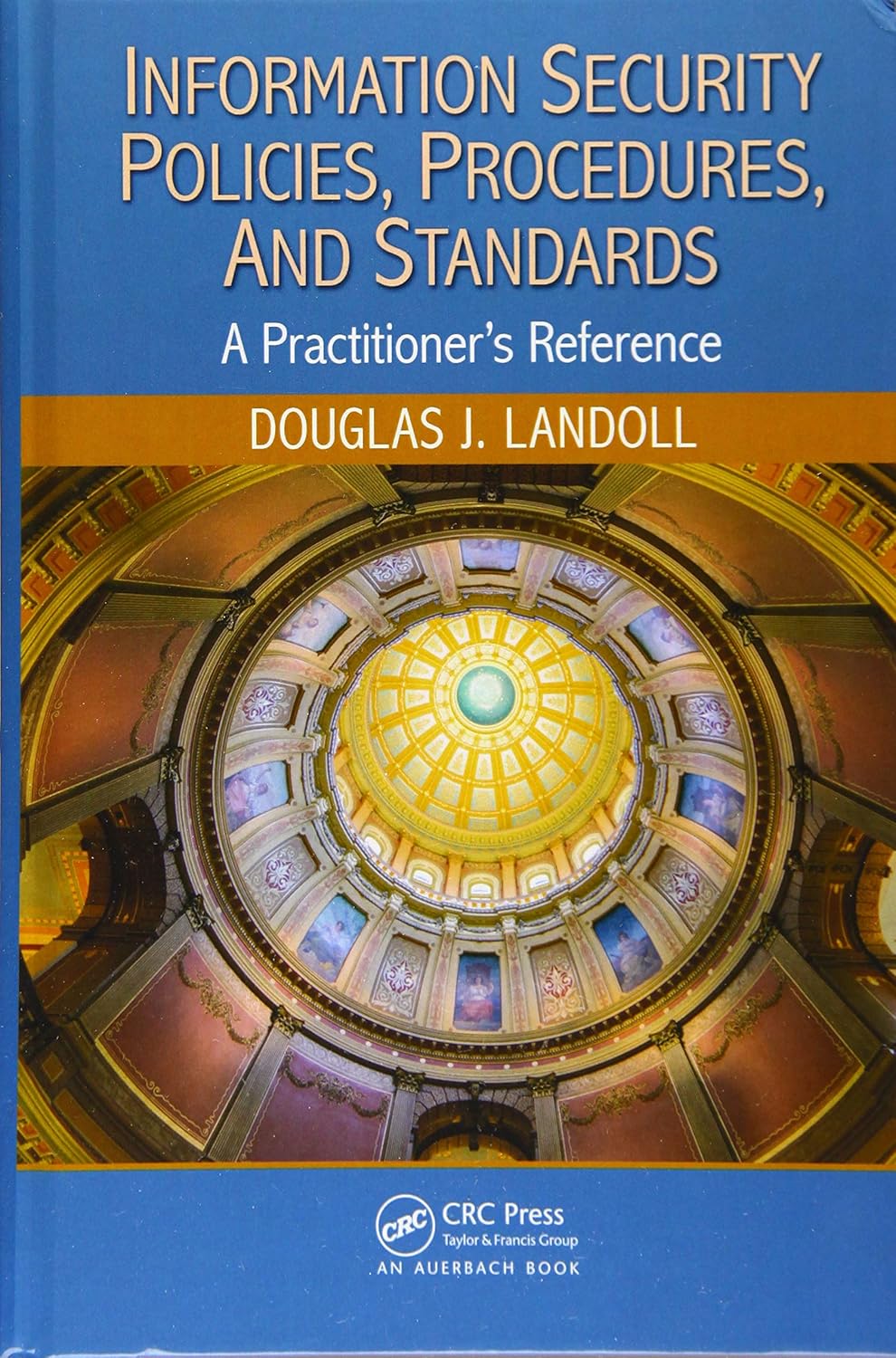
Information Security Policies, Procedures, and Standards: A Practitioner's Reference gives you a blueprint on how to develop effective information security policies and procedures. It uses standards such as NIST 800-53, ISO 27001, and COBIT, and regulations such as HIPAA and PCI DSS as the foundation for the content. Highlighting key terminology, policy development concepts and methods, and suggested document structures, it includes examples, checklists, sample policies and procedures, guidelines, and a synopsis of the applicable standards.The author explains how and why procedures are developed and implemented rather than simply provide information and examples. This is an important distinction because no two organizations are exactly alike; therefore, no two sets of policies and procedures are going to be exactly alike. This approach provides the foundation and understanding you need to write effective policies, procedures, and standards clearly and concisely.Developing policies and procedures may seem to be an overwhelming task. However, by relying on the material presented in this book, adopting the policy development techniques, and examining the examples, the task will not seem so daunting. You can use the discussion material to help sell the concepts, which may be the most difficult aspect of the process. Once you have completed a policy or two, you will have the courage to take on even more tasks. Additionally, the skills you acquire will assist you in other areas of your professional and private life, such as expressing an idea clearly and concisely or creating a project plan.
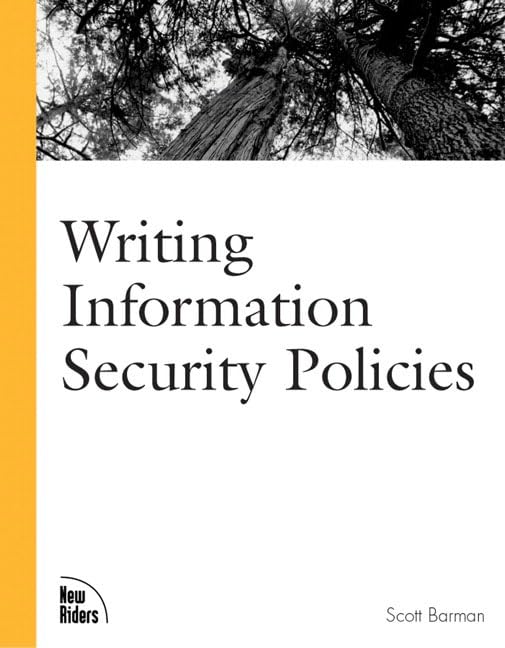
Administrators, more technically savvy than their managers, have started to secure the networks in a way they see as appropriate. When management catches up to the notion that security is important, system administrators have already altered the goals and business practices. Although they may be grateful to these people for keeping the network secure, their efforts do not account for all assets and business requirements Finally, someone decides it is time to write a security policy. Management is told of the necessity of the policy document, and they support its development. A manager or administrator is assigned to the task and told to come up with something, and fast! Once security policies are written, they must be treated as living documents. As technology and business requirements change, the policy must be updated to reflect the new environment--at least one review per year. Additionally, policies must include provisions for security awareness and enforcement while not impeding corporate goals. This book serves as a guide to writing and maintaining these all-important security policies.
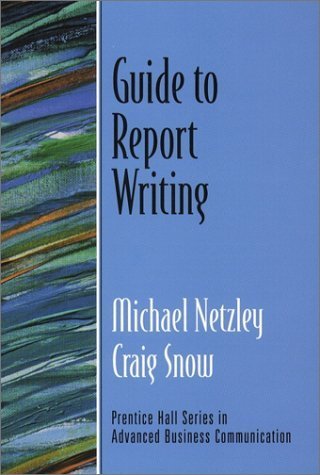
This concise, practical book is written for you if your professional success is linked to the quality of the reports you produce. You will learn how to...*Manage data, minimize discomfort, and master the report-writing process *Assure that your reports get read, understood, and acted on--rather than contributing to information overload *Develop a communication strategy that enables you to design reports to meet the needs of diverse readers and decision-makers *Write reports that are clear, high in skim-value, and rich in content-value *Follow a sound approach to report-writing so you will avoid procrastination and use your time productively *Allow your readers to find it a pleasure--rather than a struggle--to read your reports *Convey your ideas so clearly and persuasively that you gain recognition and influence within your organization Like all the books in the Prentice Hall Guides to Advanced Business Communications series, this book is ...*Brief: summarizes key ideas only *Practical: offers clear, straightforward tools you can use *Reader-friendly: provides easy-to-skim format
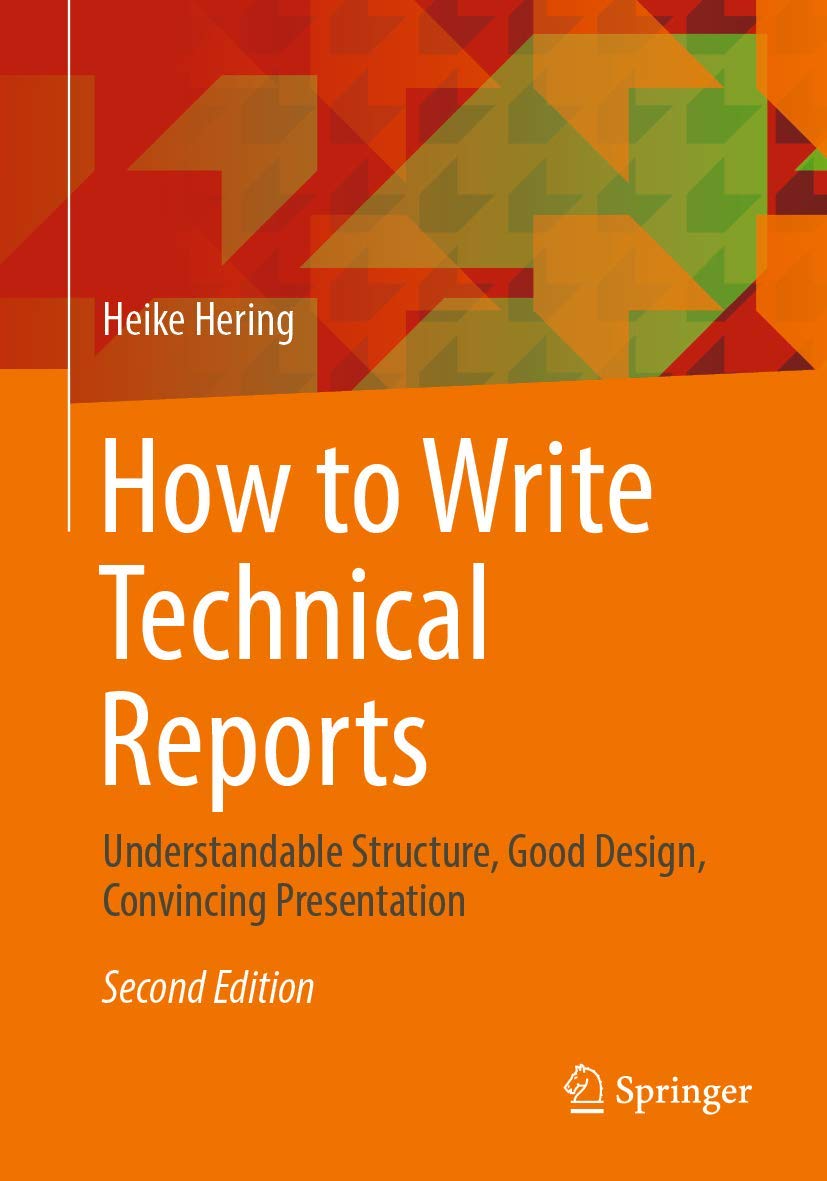
Offers a practical, step-by-step guide to scientific writing Presents an indispensable, clear and comprehensibly written guideline for students as well as a useful reference for experienced scientists New edition focusses only on electronic reports and the needs of the electronic world Includes a chapter on oral presentations
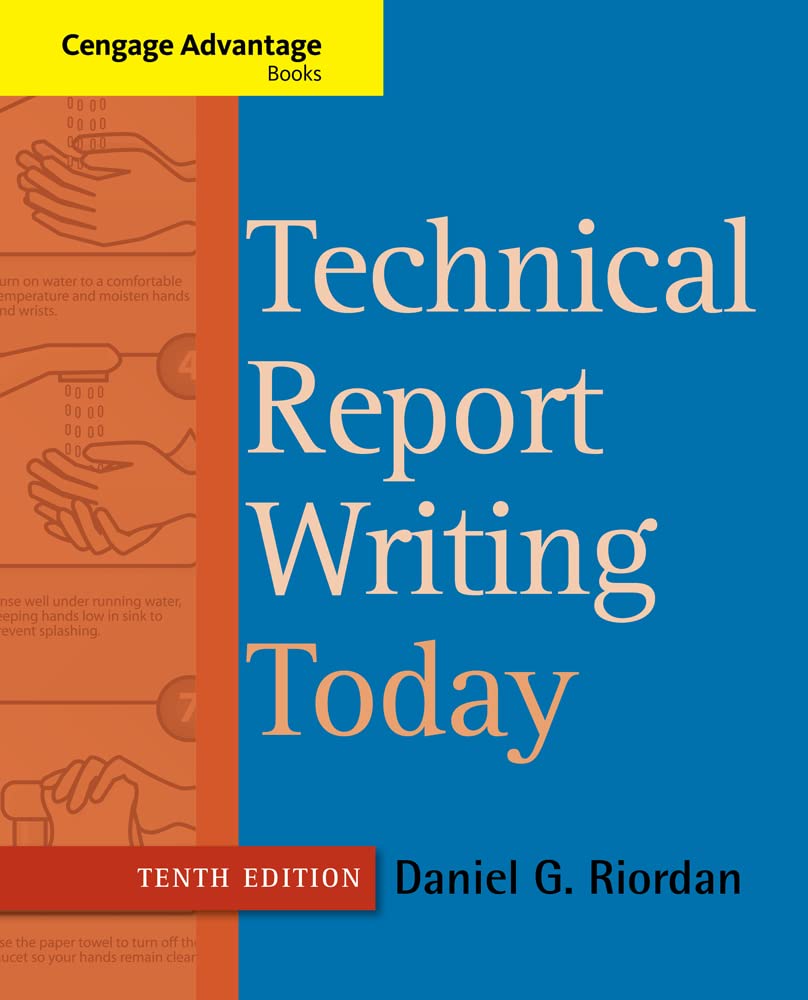
TECHNICAL REPORT WRITING TODAY provides thorough coverage of technical writing basics, techniques, and applications. Through a practical focus with varied examples and exercises, students internalize the skills necessary to produce clear and effective documents and reports. Project worksheets help students organize their thoughts and prepare for assignments, and Focus boxes highlight key information and recent developments in technical communication. Extensive individual and collaborative exercises expose students to different kinds of technical writing problems and solutions. Annotated student examples--more than 100 in all--illustrate different writing styles and approaches to problems. Numerous short and long examples throughout the text demonstrate solutions for handling writing assignments in current career situations. The four-color artwork in the chapter on creating visuals keeps pace with contemporary workplace capabilities. The Tenth Edition offers the latest information on using electronic resumes and documenting electronic sources and Ethics and Globalization sidebars that highlight these two important topics in the technical communication field.
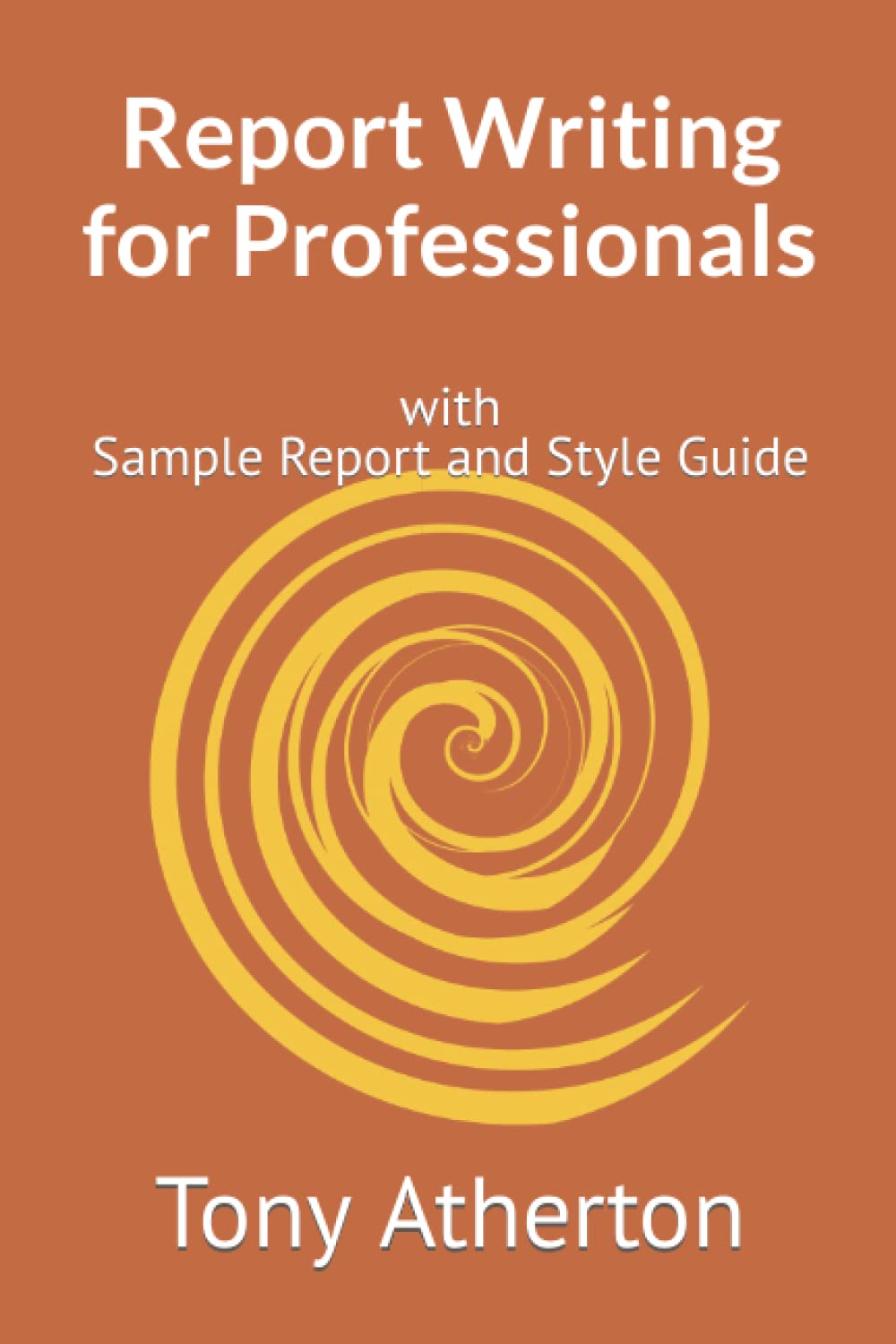
From architects to zoo keepers, nearly all professional people have to write reports; usually more and more of them as careers progress. Maybe you always yearned to be a writer but for many it can be a struggle. Do your reports take up too much of your time and end up being far too long?Full of practical guidance and principles, this book is based on training courses that have run for over 20 years. It will help you to write shorter and better reports to a professional standard and make it easier and faster to do so. It even develops a sample report from concept to final version, revealing the steps along the way. Steps that include skilled planning that saves time, writing the draft, and careful revising and editing to cut and polish your rough diamond into a sparkling gem. All these help to make a report easier to write, easier to read and easier for your internal reviewers to accept.The contents include focussing on the aims and the readers; the conventional format; other formats including the 1:3:25; structuring sections, subsections and paragraphs; topic paragraphs and topic sentences; headings; writing for both specialists and non-specialists; how much detail to include; actives, passives and smothered verbs; illustrations and tables; achieving consistency; appendices and annexes; using your grammar checker and readability statistics – and more. There is also an extensive style guide with over 200 entries to answer awkward questions.
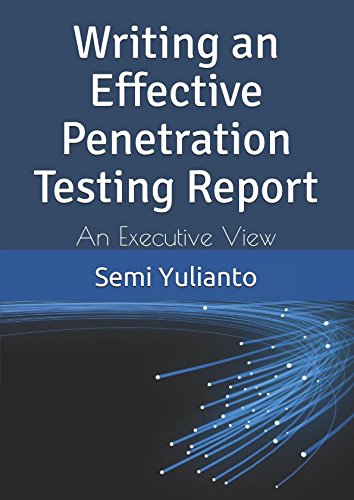
Penetration test or pentest is a typical security assessment which is the process to gain access to specific information assets (eq. computer systems, network infrastructure, or application). Penetration test simulates the attack performed internally or externally by the attackers which has the intention to find security weaknesses or vulnerabilities and validate the potential impacts and risks should those vulnerabilities being exploited. Security issues found through penetration test are presented to the system’s owner, data owner or risk owner. Effective penetration test will support this information with accurate assessment of the potential impacts to the organization and range of technical and procedural safeguards should be planned and executed to mitigate risks. Many penetration testers are in fact very good in technical since they have skills needed to perform all of the tests, but they are lack of report writing methodology and approach which create a very big gap in penetration testing cycle. A penetration test is useless without something tangible to give to a client or senior management. Report writing is a crucial part for any service providers (eq. IT service/advisory). A report should detail the outcome of the test and, if you are making recommendations, document the recommendations to secure any high-risk systems. The target audience of a penetration testing report will vary, technical report will be read by IT or any responsible information security people while executive summary will definitely be read by the senior management. Writing an effective penetration testing report is an art that needs to be learned and to make sure that the report will deliver the right information to the targeted audience. After reading the book, you will be able to: understand on how to create a good and effective penetration testing report; understand the mechanism to provide an effective deliverables; apply risk management knowledge & skills and blend them in your deliverables.
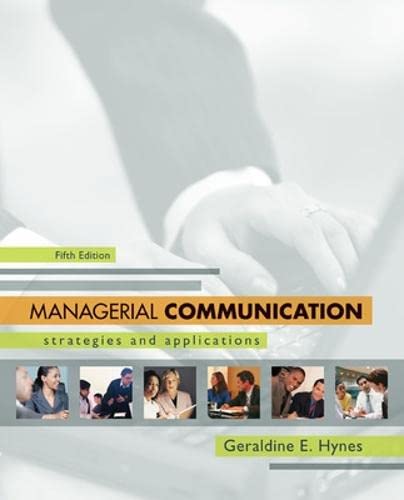
Managerial Communication, 5e by Geraldine Hynes focuses on skills and strategies that managers need in today’s workplace. This book continues to stand out in the field for its strategic approach, solid research base, comprehensive range of topics, even-handed examination of oral and written channels, and focus on managerial, not entry-level, competencies. The overriding principle for the revision was to preserve the book’s key strengths while reflecting the realities of the twenty-first century workplace. The chapters have been streamlined and condensed to meet the needs of a busy contemporary manager and content has been added to reflect current business practices.
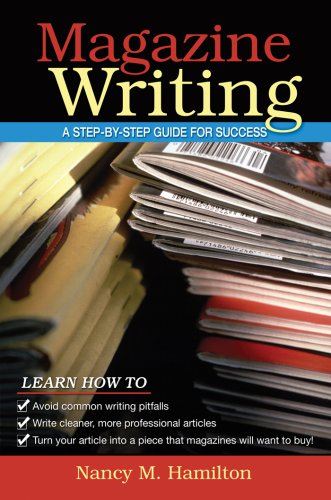
"The approach. . .the clarity of information presented, and the style of writing make it a clear leader in the field of magazine writing."--Dr. Douglas Perret Starr, Professor of Journalism at Texas A&M University and author of Speech Ghostwriting: A Complete Guide to Crafting Speeches for Other People.All magazine writers share a common goal--to sell their articles. Magazine Writing shows writers how to build articles and turn them into a saleable piece. They will learn to brainstorm an idea, road test it, and research it; query the article, structure it, and edit and revise it; and find magazines, print and online, appropriate for their article.
-Discusses ethics, including the Jayson Blair case,to show acceptable professional conduct.
-Illustrates common mistakes made during the writing process to help writers avoid common pitfalls and write cleaner, more professional articles.
-Looks at major article types including the personality profile, how-to, and first person narrative (illustrated with published examples).
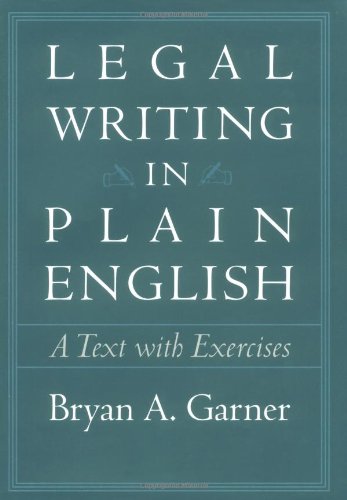
Admirably clear, concise, down-to-earth, and powerful-unfortunately, these adjectives rarely describe legal writing, whether in the form of briefs, opinions, contracts, or statutes. In Legal Writing in Plain English, Bryan A. Garner provides lawyers, judges, paralegals, law students, and legal scholars sound advice and practical tools for improving their written work. The book encourages legal writers to challenge conventions and offers valuable insights into the writing process: how to organize ideas, create and refine prose, and improve editing skills. In essence, it teaches straight thinking—a skill inseparable from good writing.Replete with common sense and wit, the book draws on real-life writing samples that Garner has gathered through more than a decade of teaching in the field. Trenchant advice covers all types of legal materials, from analytical and persuasive writing to legal drafting. Meanwhile, Garner explores important aspects of document design. Basic, intermediate, and advanced exercises in each section reinforce the book's principles. (An answer key to basic exercises is included in the book; answers to intermediate and advanced exercises are provided in a separate Instructor's Manual, free of charge to instructors.) Appendixes include a comprehensive punctuation guide with advice and examples, and four model documents.Today more than ever before, legal professionals cannot afford to ignore the trend toward clear language shorn of jargon. Clients demand it, and courts reward it. Despite the age-old tradition of poor writing in law, Legal Writing in Plain English shows how legal writers can unshackle themselves.Legal Writing in Plain English includes:
*Tips on generating thoughts, organizing them, and creating outlines.
*Sound advice on expressing your ideas clearly and powerfully.
*Dozens of real-life writing examples to illustrate writing problems and solutions.
*Exercises to reinforce principles of good writing (also available on the Internet).
*Helpful guidance on page layout.
*A punctuation guide that shows the correct uses of every punctuation mark.
*Model legal documents that demonstrate the power of plain English.
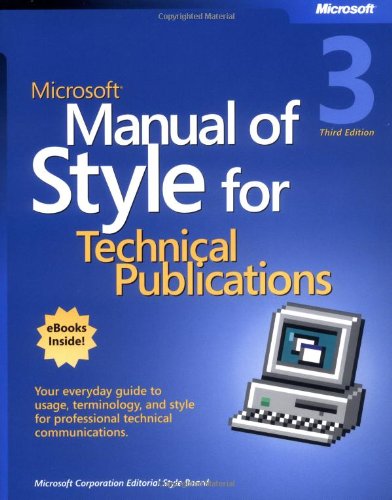
Developed by Microsoft’s senior editors and content managers, this manual of style captures the up-to-date standards and best practices for delivering clear and consistent technical communications. Now in its third edition, this popular reference has been fully revised, expanded, and optimized for ease of use. You’ll find new coverage on meeting the needs of a global audience, accessibility concerns, and the latest technical terms and acronyms—along with expertly organized sections on usage, grammar, punctuation, tone, formatting, and common style problems. Whether you’re creating print documentation, online help, Web content, or other communications, you’ll get the information and examples you need to maximize the impact and precision of your message.Get clear, concise guidance to help you:
- Use technical terms correctly and consistently—including do’s, don’ts, and alternatives for usage.
- Employ the appropriate tone and voice for your audience.
- Produce written and visual content suitable for a worldwide audience.
- Apply best practices for writing and tagging Web content.
- Write better documentation—from dialog boxes and error messages to Web pages and software code.
- Know the standards for creating accessible communications.
- Optimize your indexes, cross-references, and keyword lists.
- Get fast answers on spelling, grammar, and punctuation.
- Complete eBook inside
The current version can be found on Microsoft’s Web site.
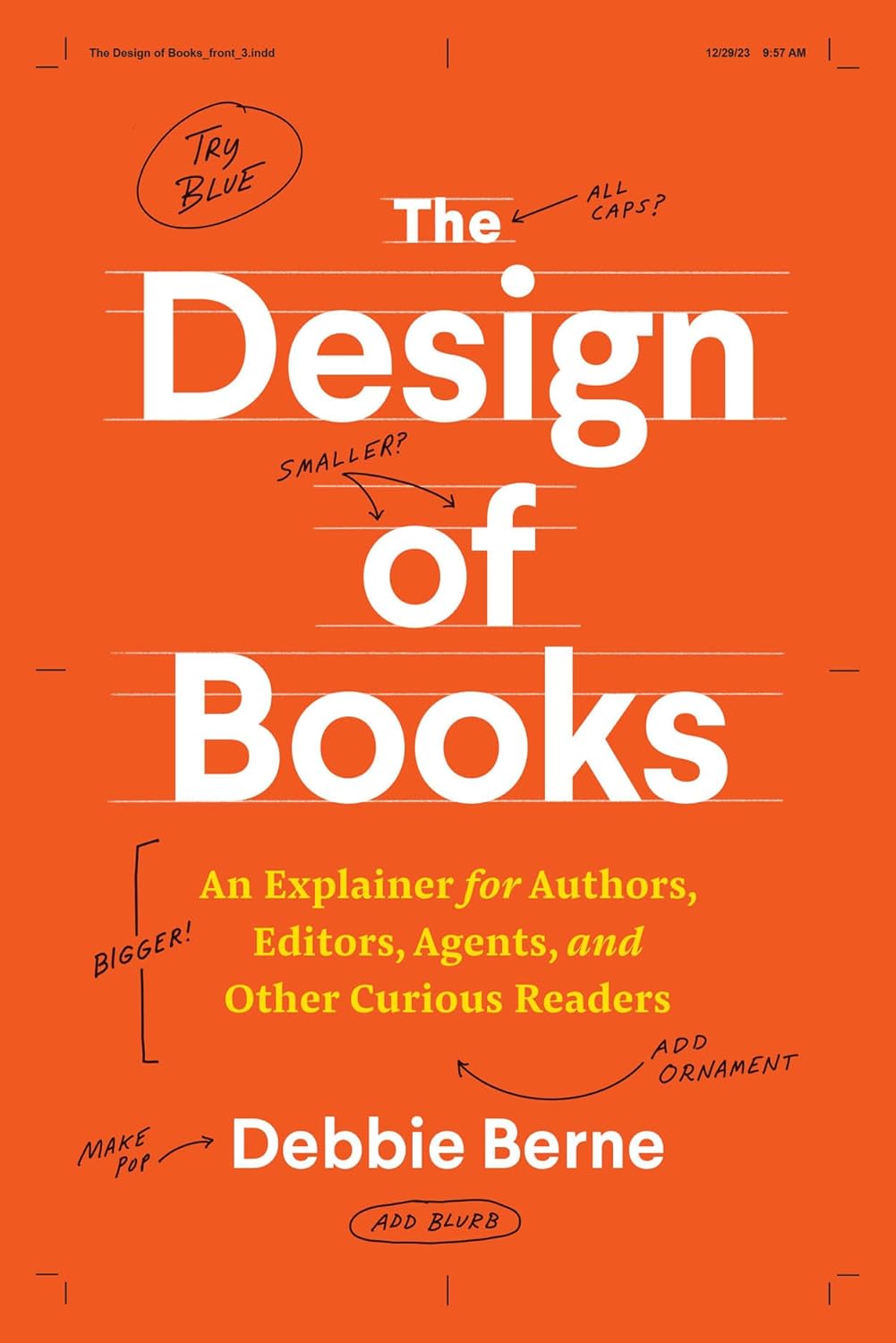
Design is central to the appeal, messaging, and usefulness of books, but to most readers, it’s mysterious or even invisible. Through interiors as well as covers, designers provide structure and information that shape the meaning and experience of books. In The Design of Books, Debbie Berne shines a light on the conventions and processes of her profession, revealing both the aesthetic and market-driven decisions designers consider to make books readable and beautiful. In clear, unstuffy language, Berne reveals how books are put together, with discussions of production considerations, typography and fonts, page layouts, use of images and color, special issues for ebooks, and the very face of each book: the cover. The Design of Books speaks to readers and directly to books’ creators—authors, editors, and other publishing professionals—helping them to become more informed partners in the design of their projects. Berne lays out the practical steps at each stage of the design process, providing insight into who does what when and offering advice for authors on how to be effective advocates for their ideas while also letting go and trusting their manuscripts with teams of professionals. She includes guidance as well for self-publishing authors, including where to find a designer, what to expect from that relationship, and how to art direct your own book. Throughout, Berne teaches how understanding the whats, hows, and whys of book design heightens our appreciation of these cherished objects and helps everyone involved in the process to create more functional, desirable, and wonderful books.
As a working cybersecurity professional, every attempt is made to separate professional and personal endeavors in a manner consistent with reducing conflicts of interest and maintaining ethics. Statements contained within this site are the explicit and implicit goals, objectives, endorsements, and educated opinion of the author of this site and not those of current or former employers.

